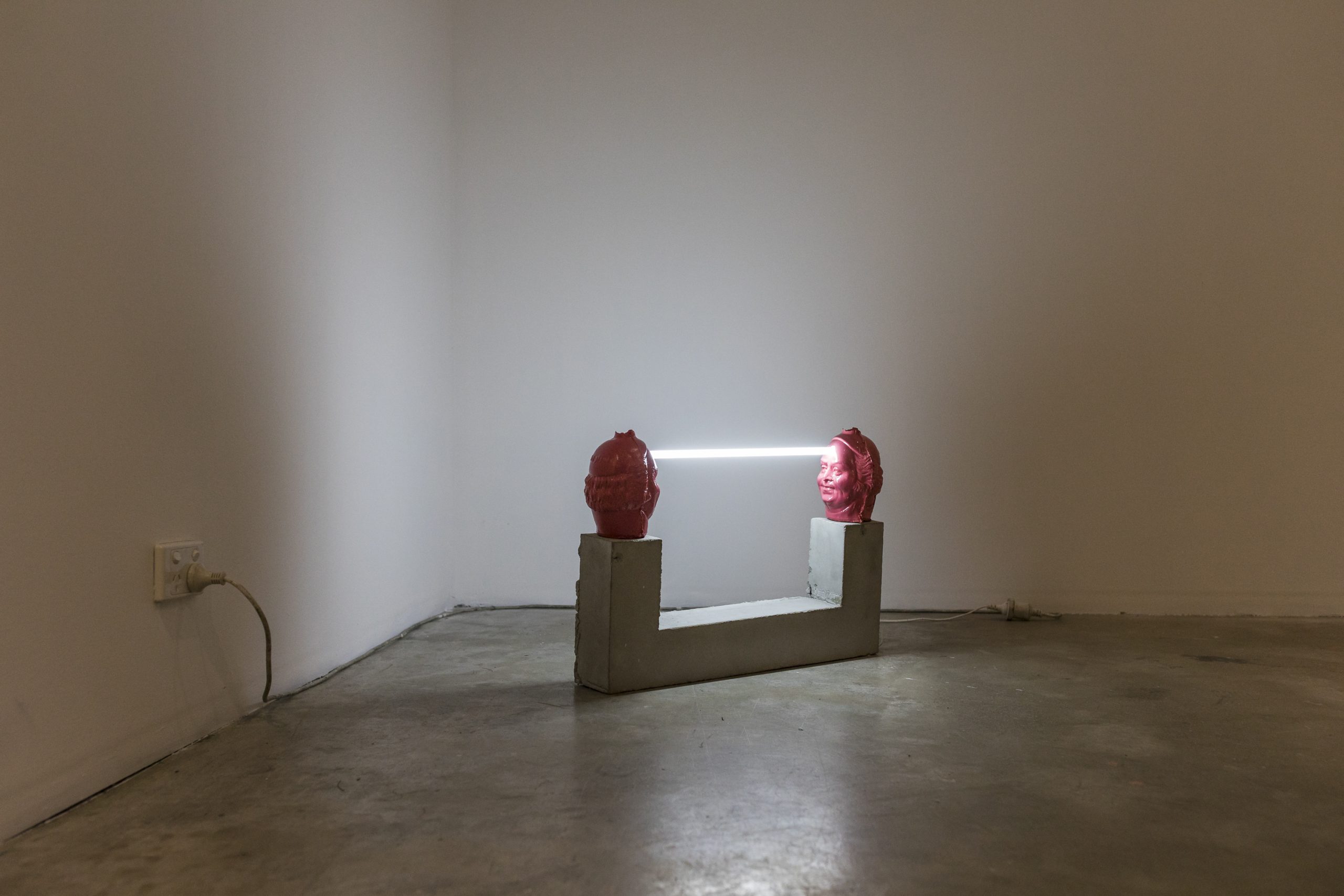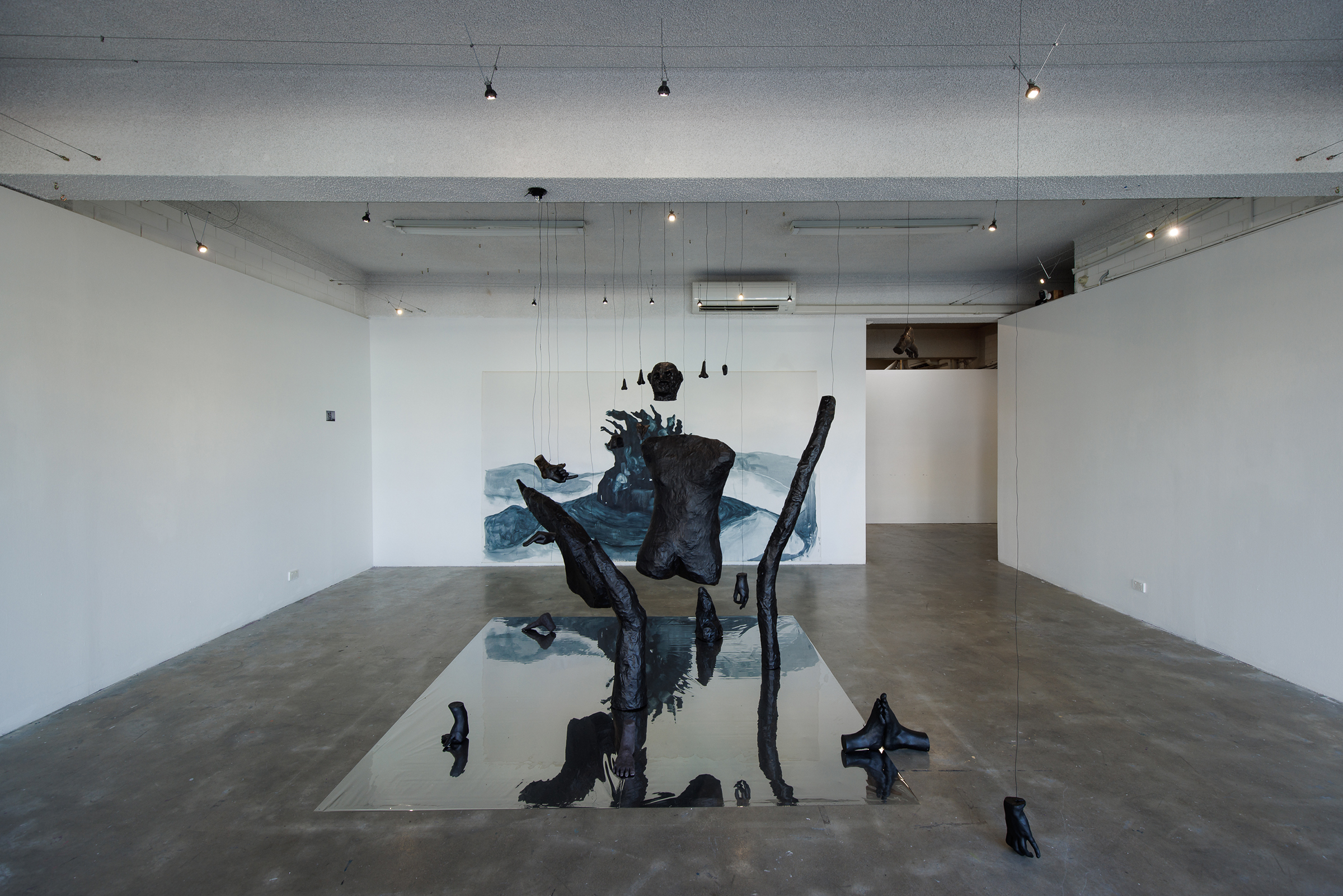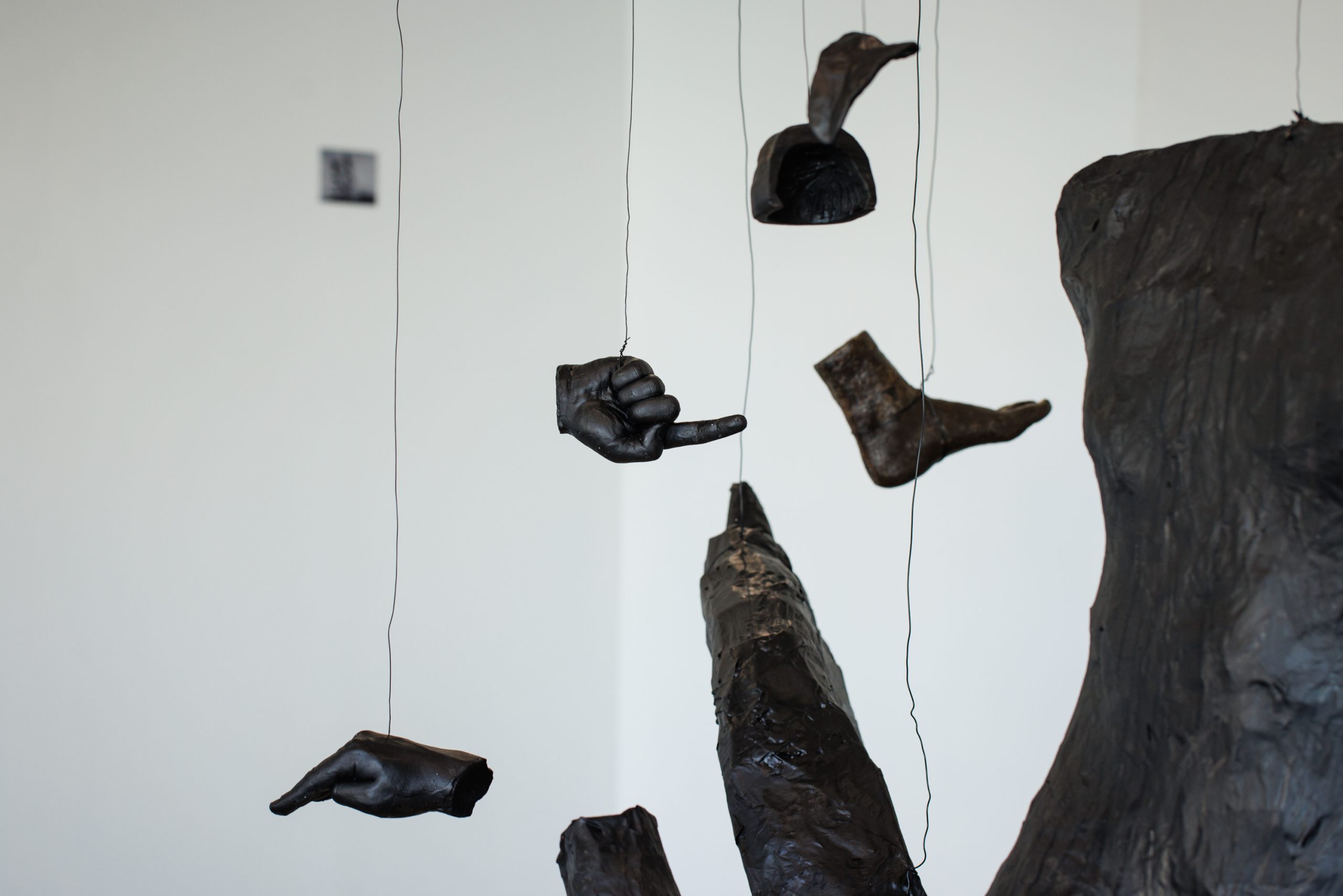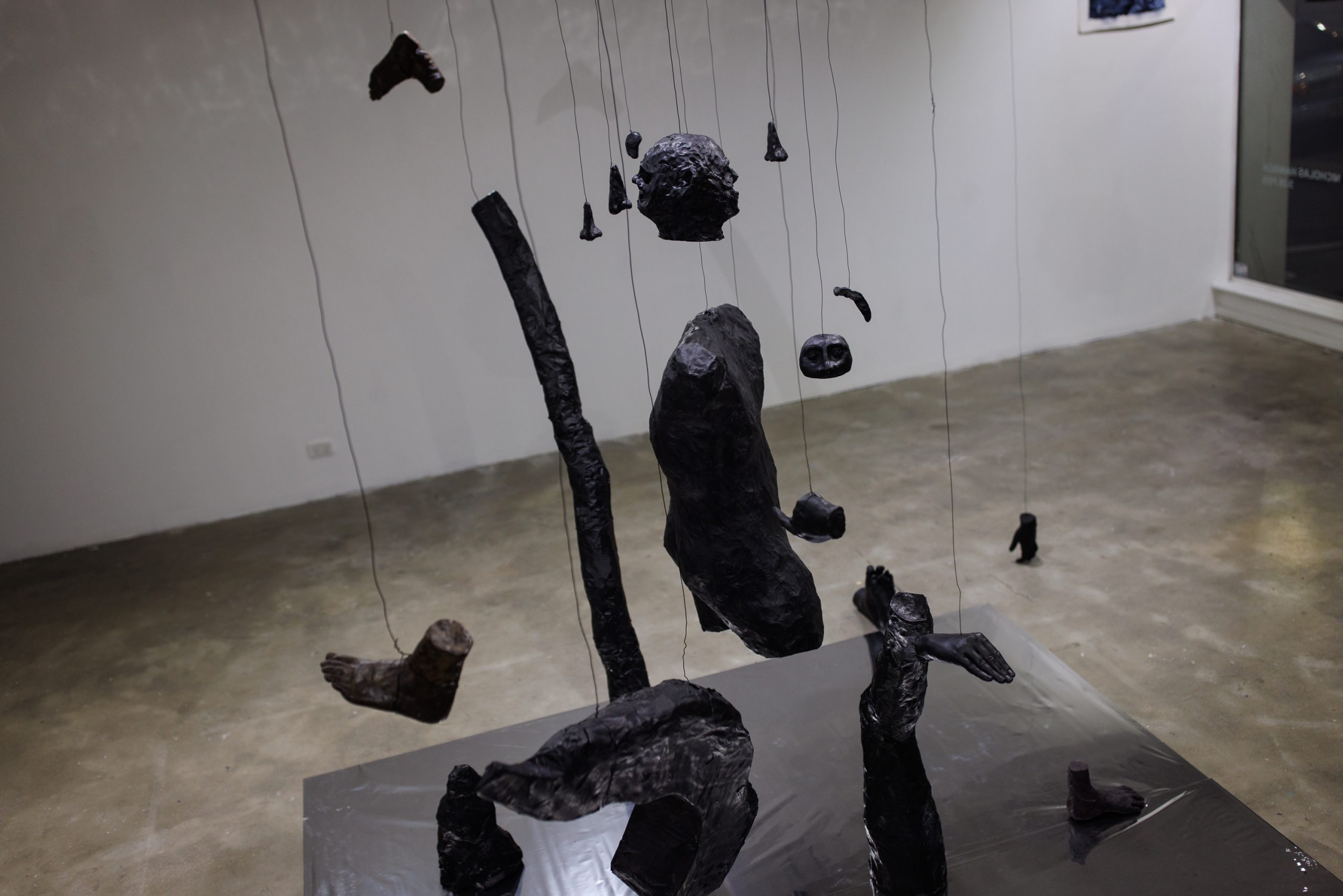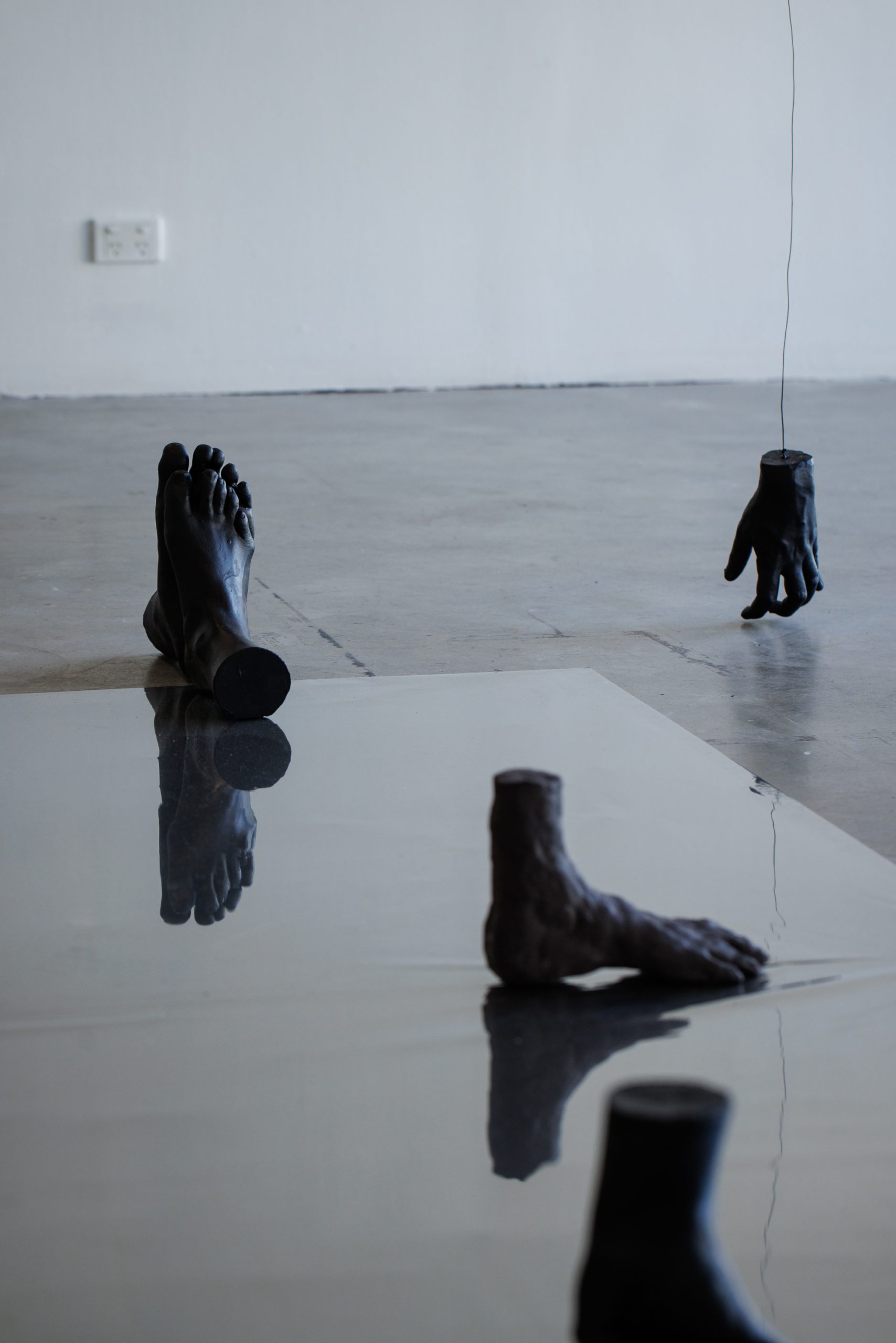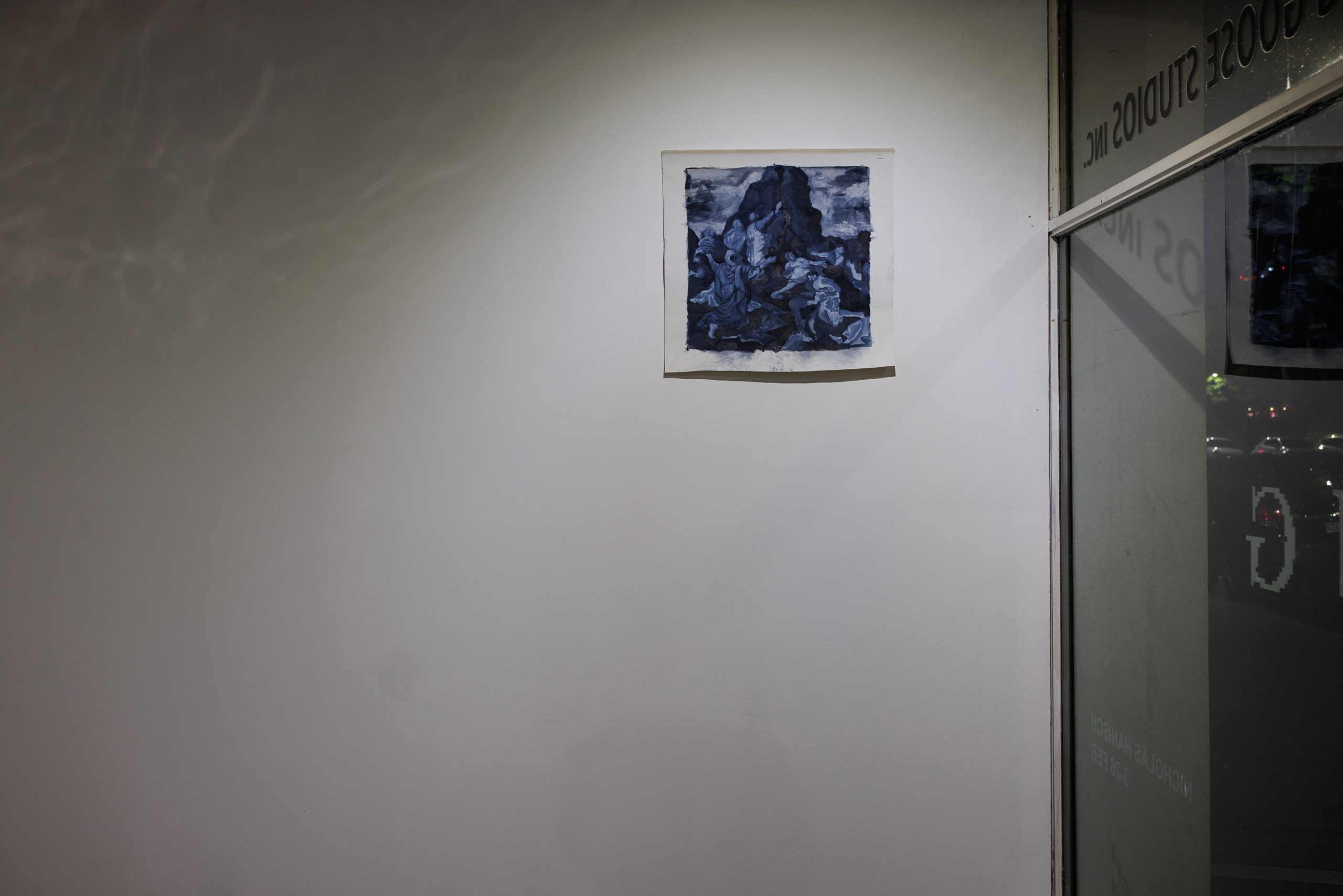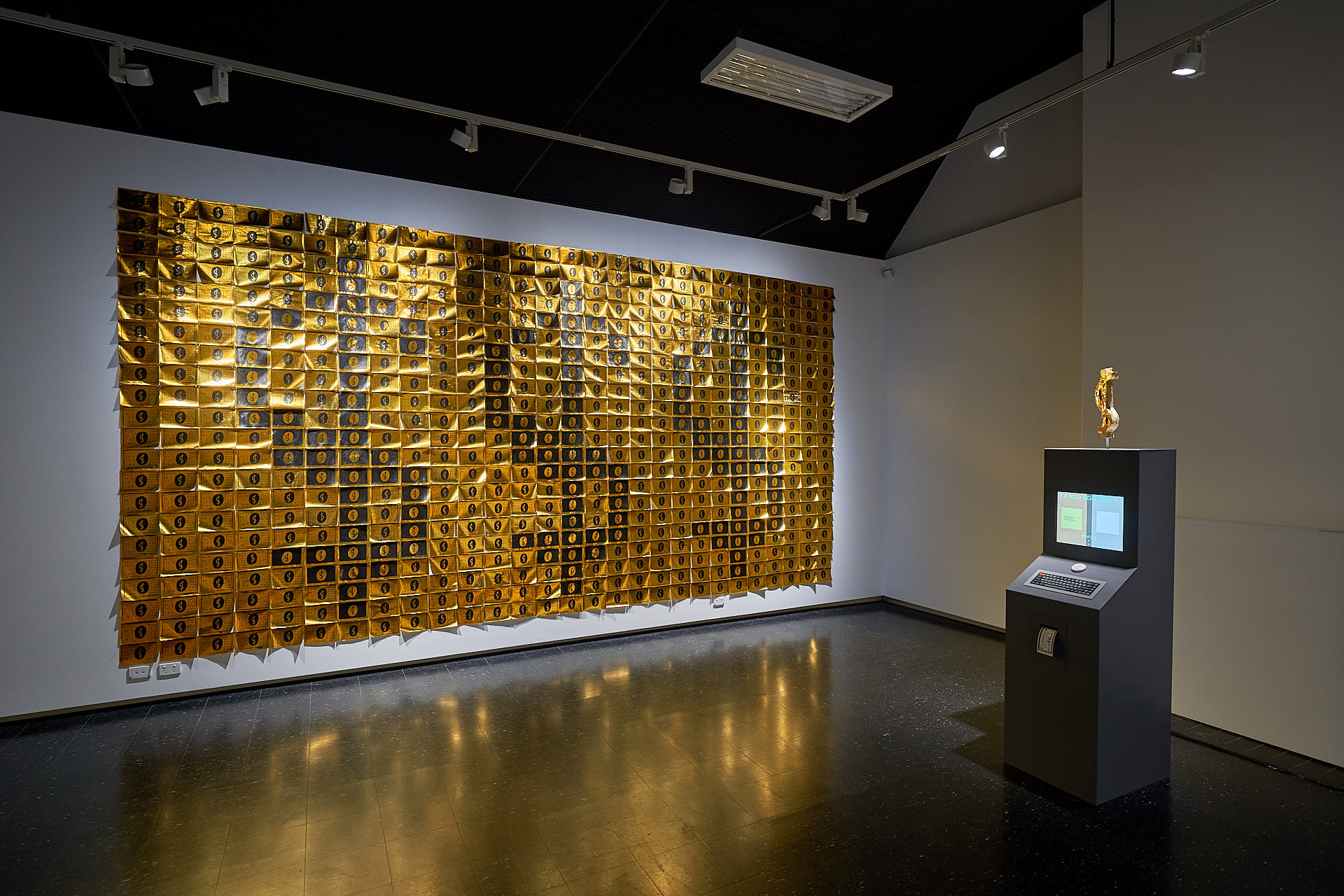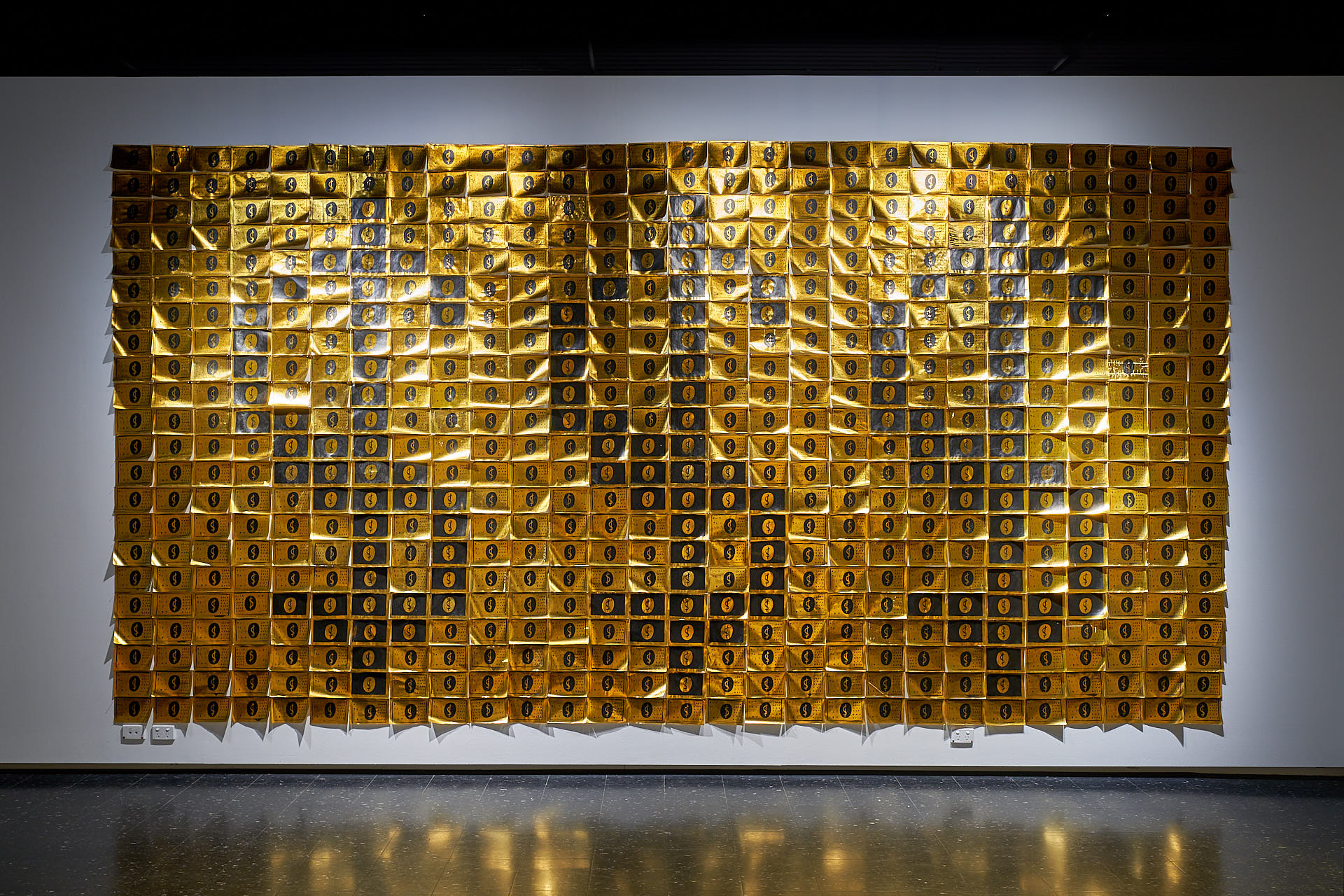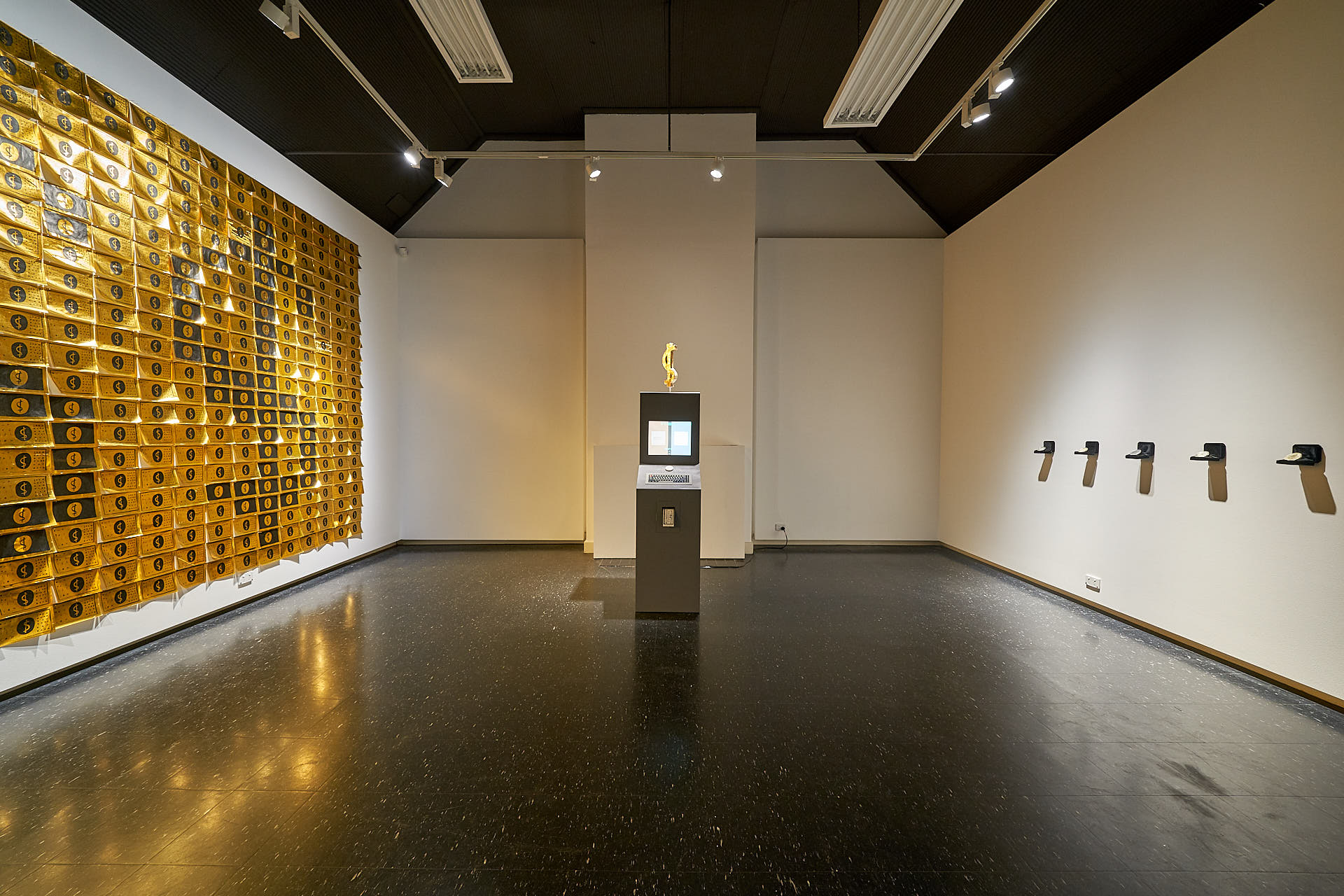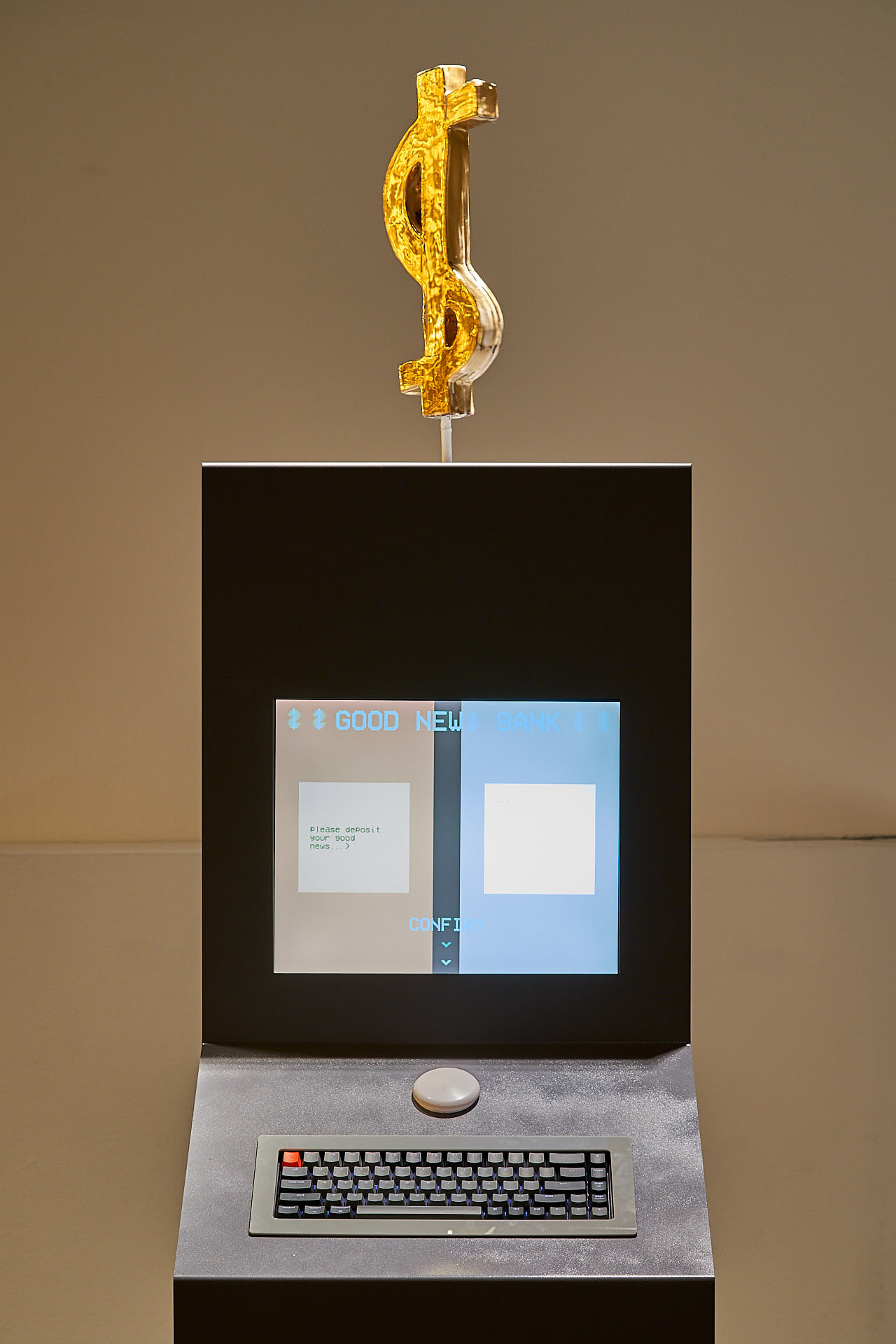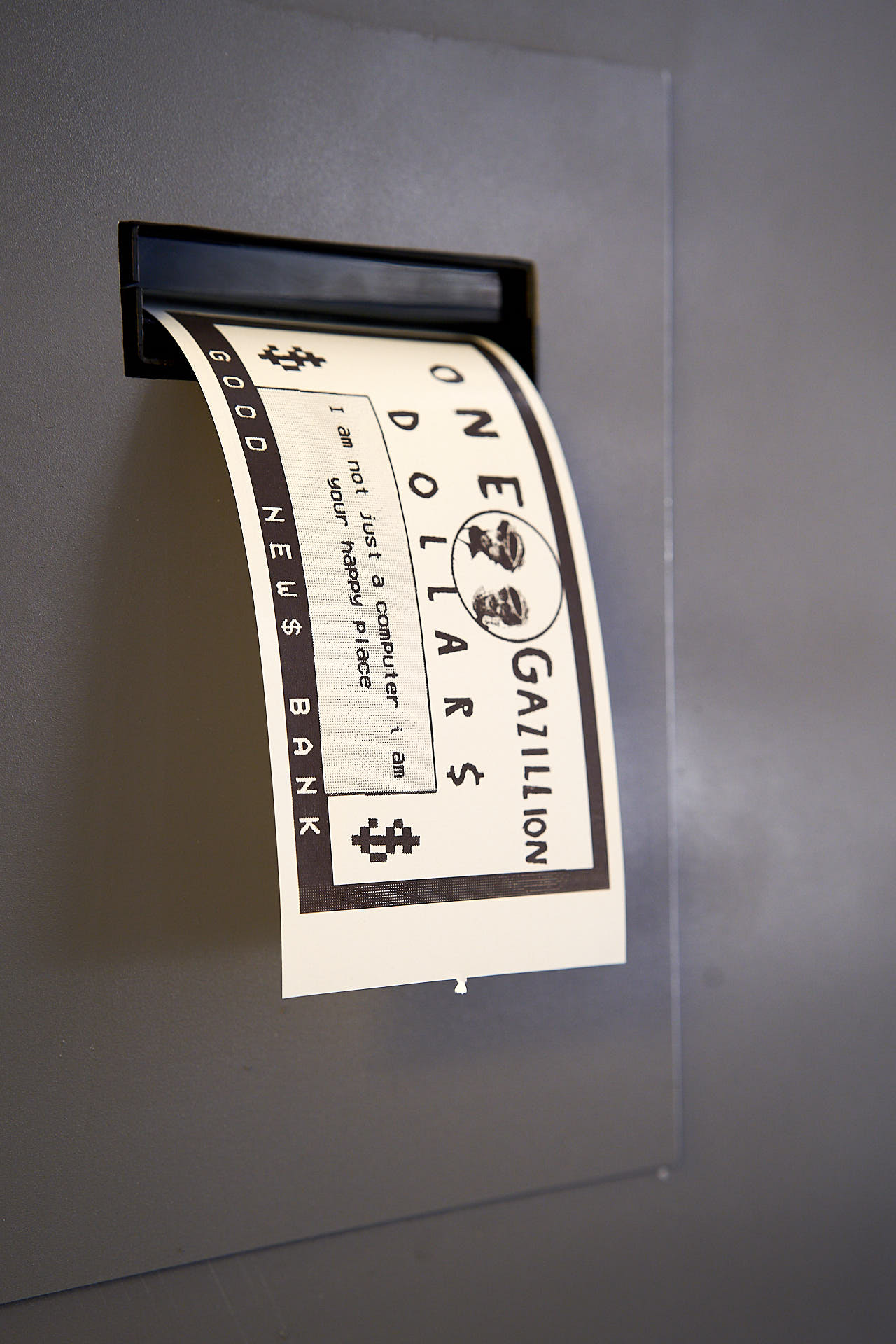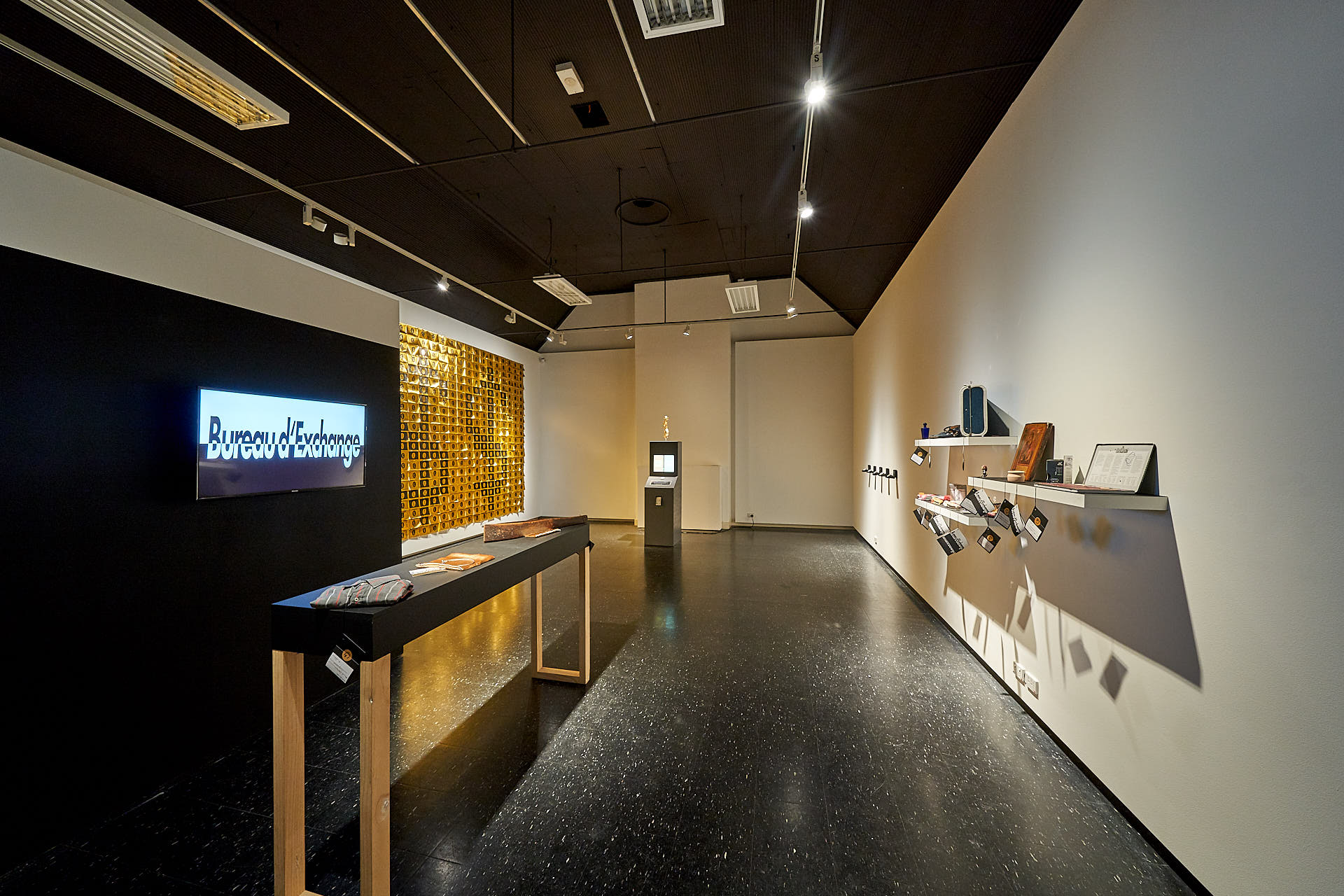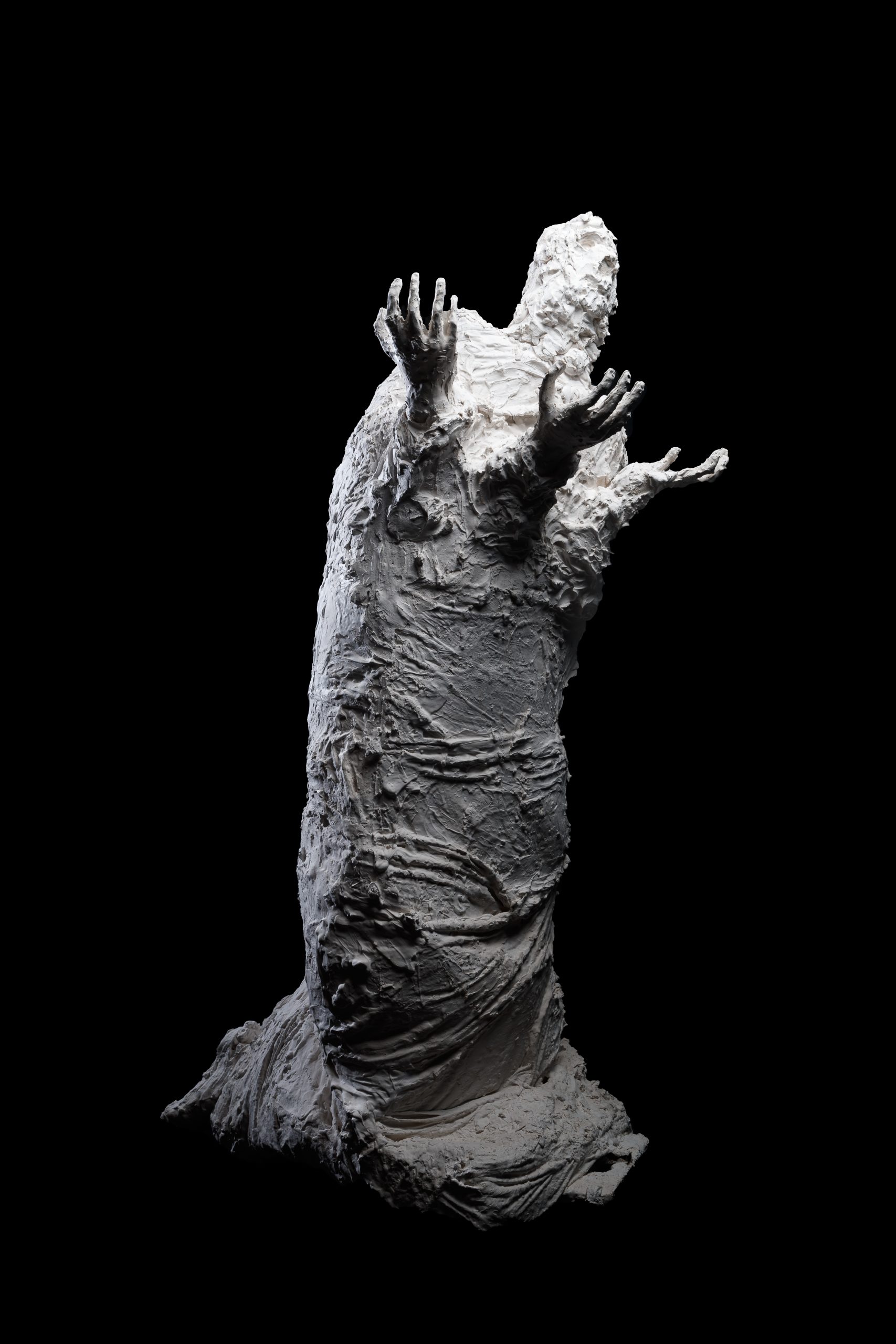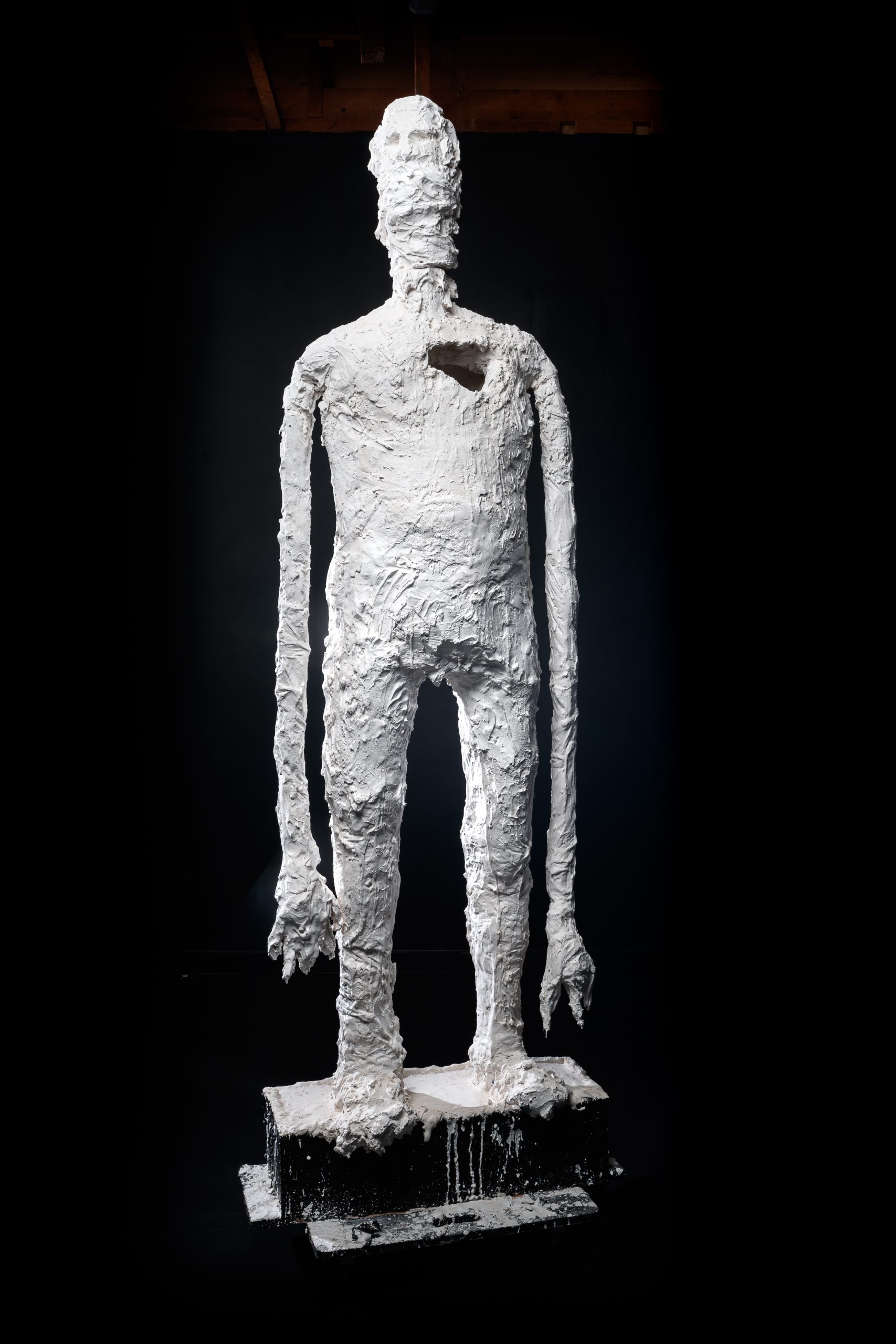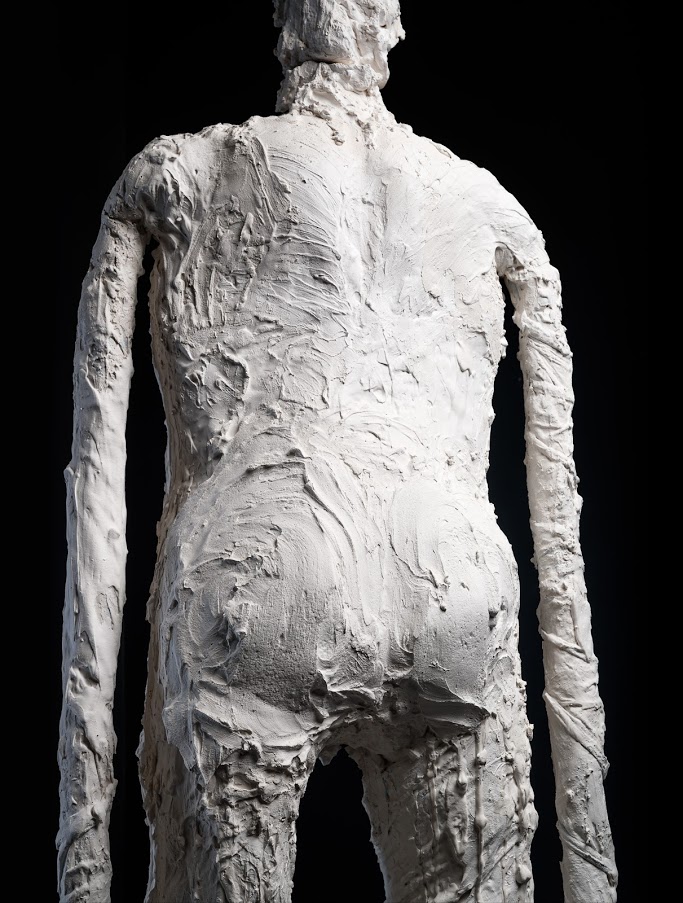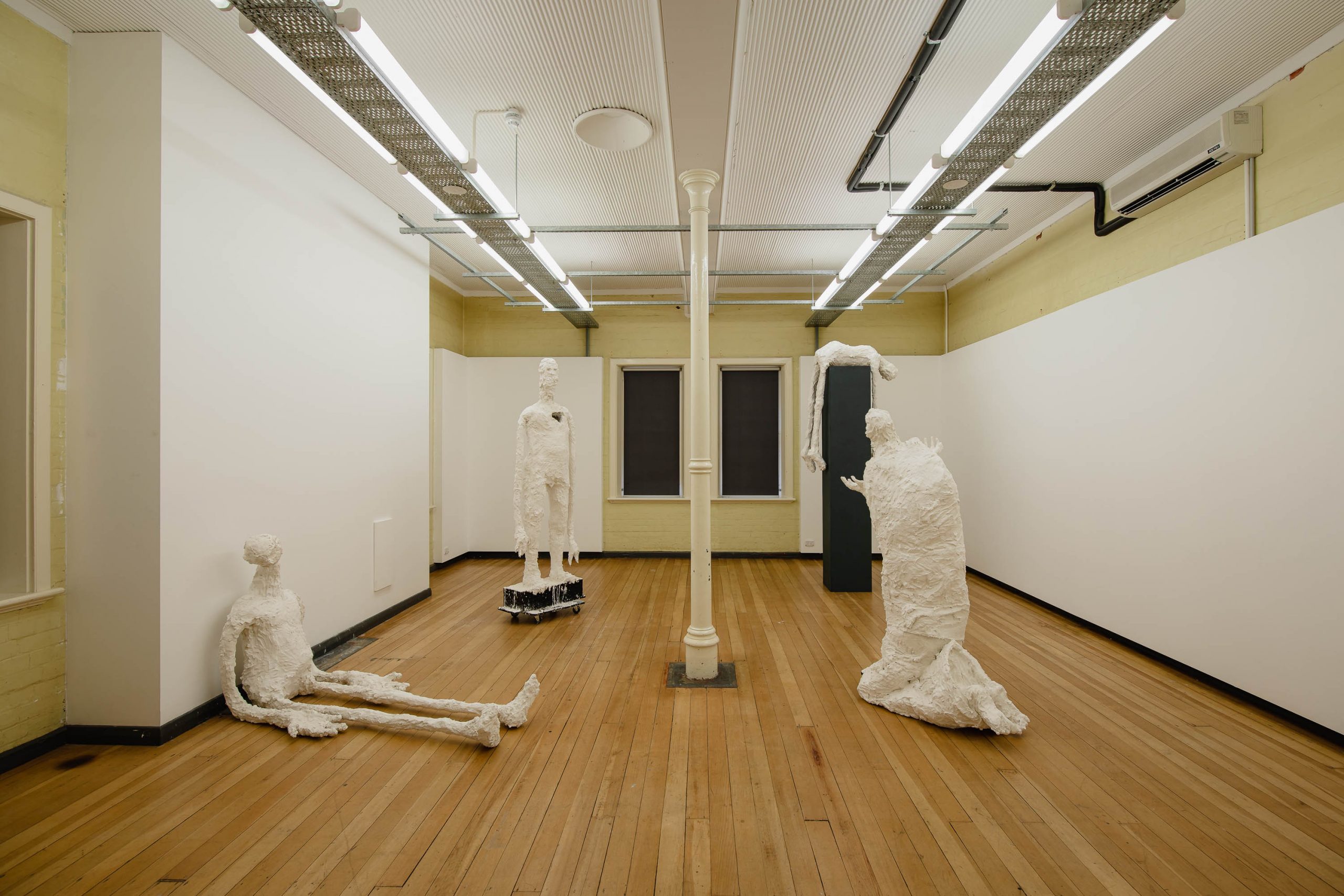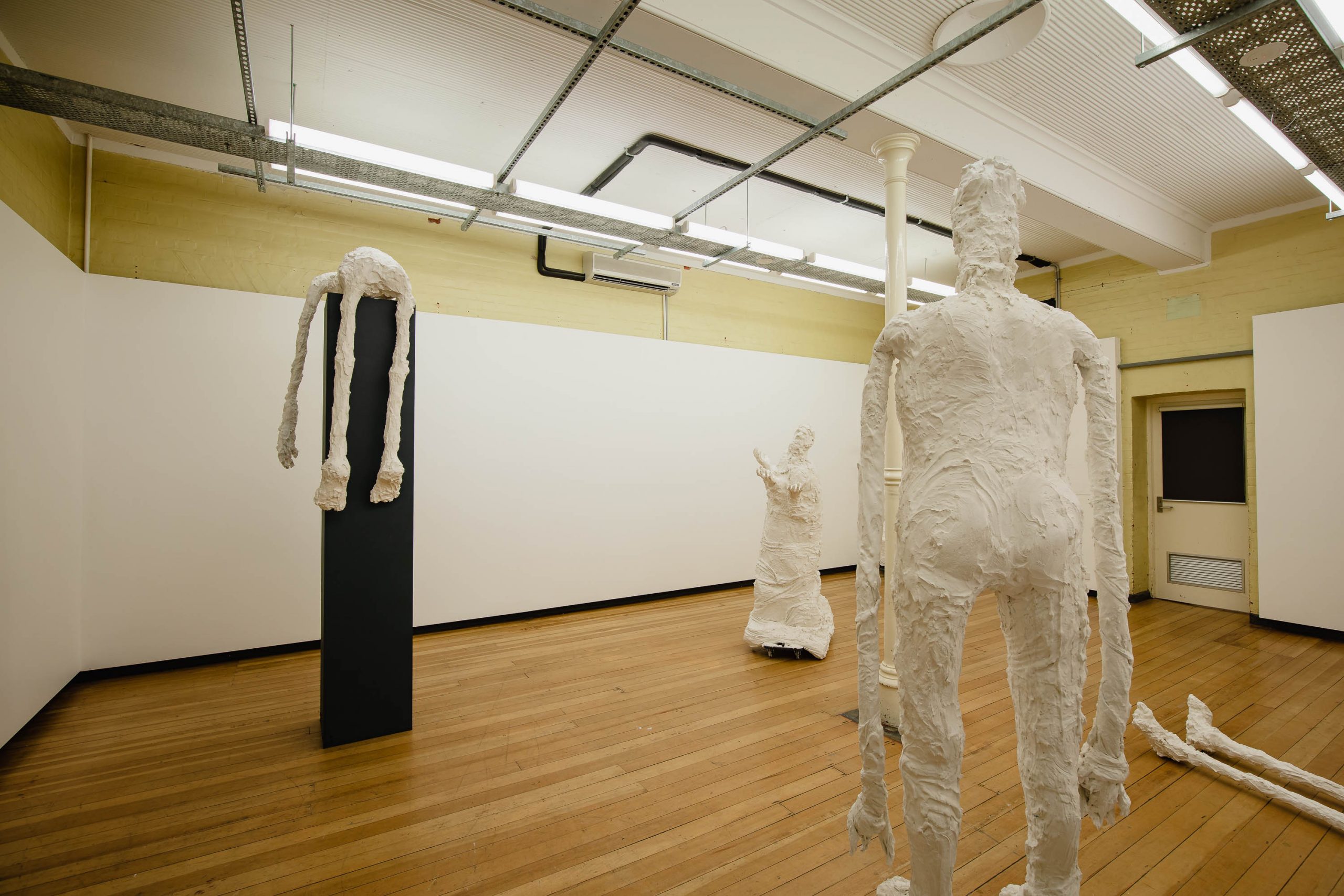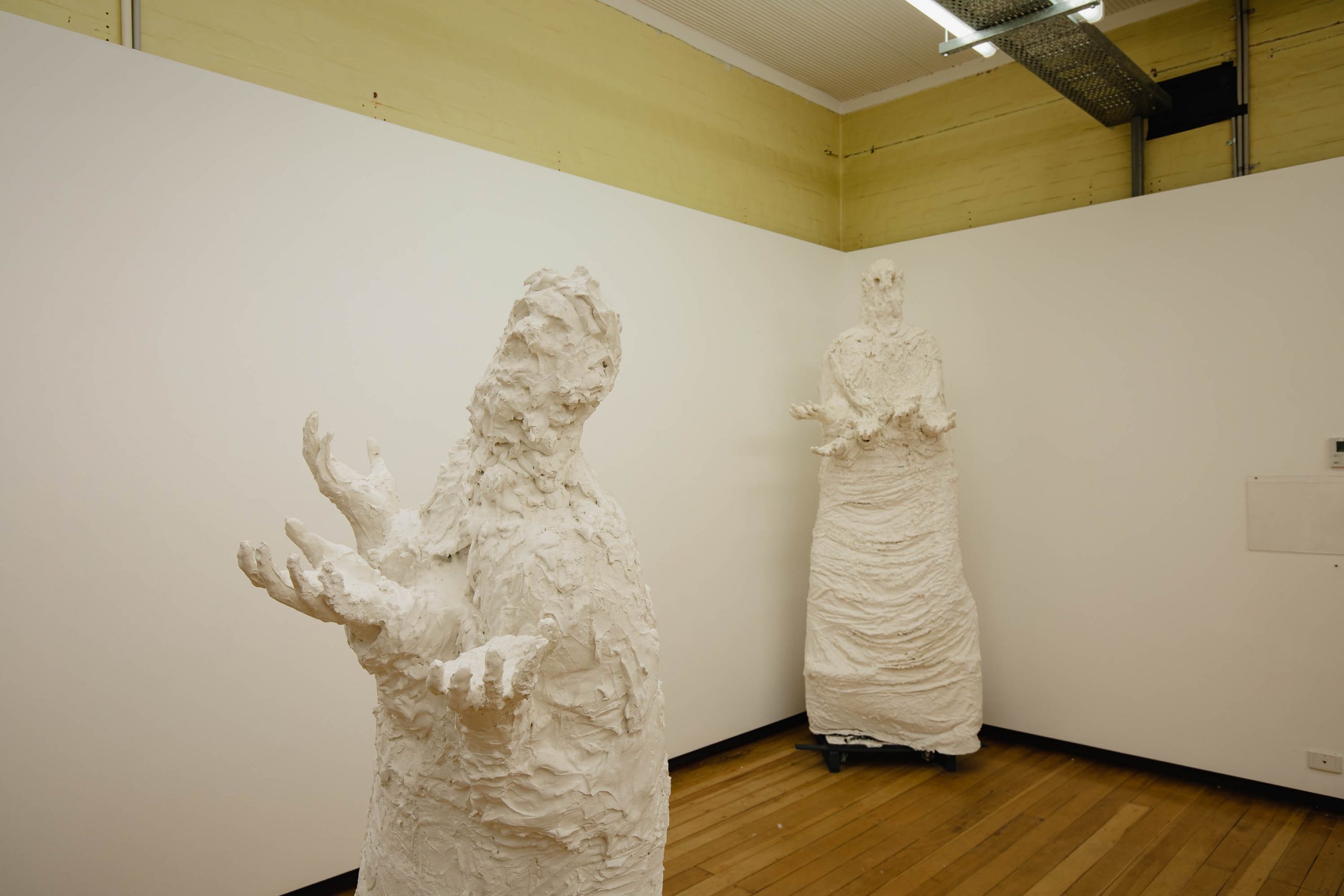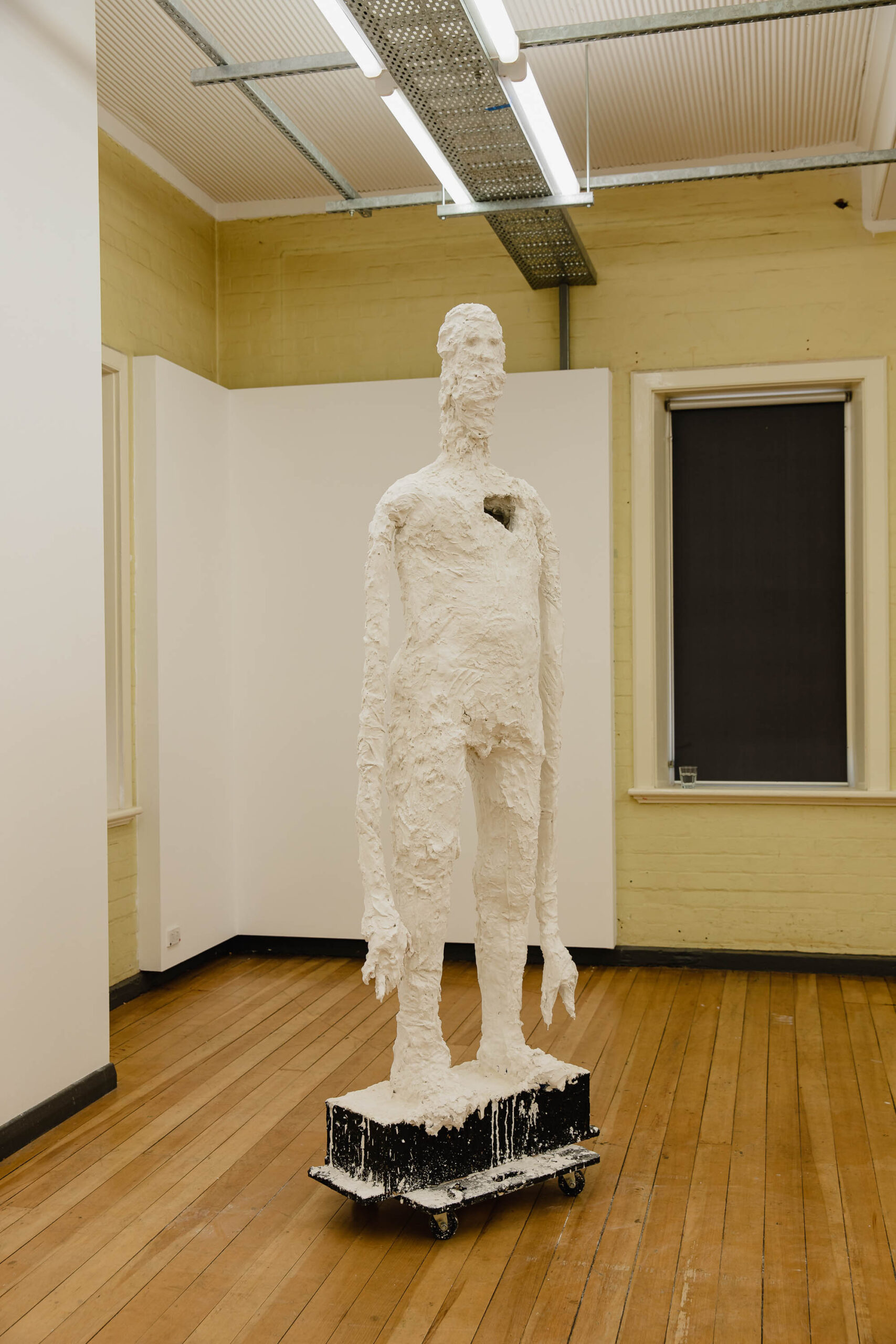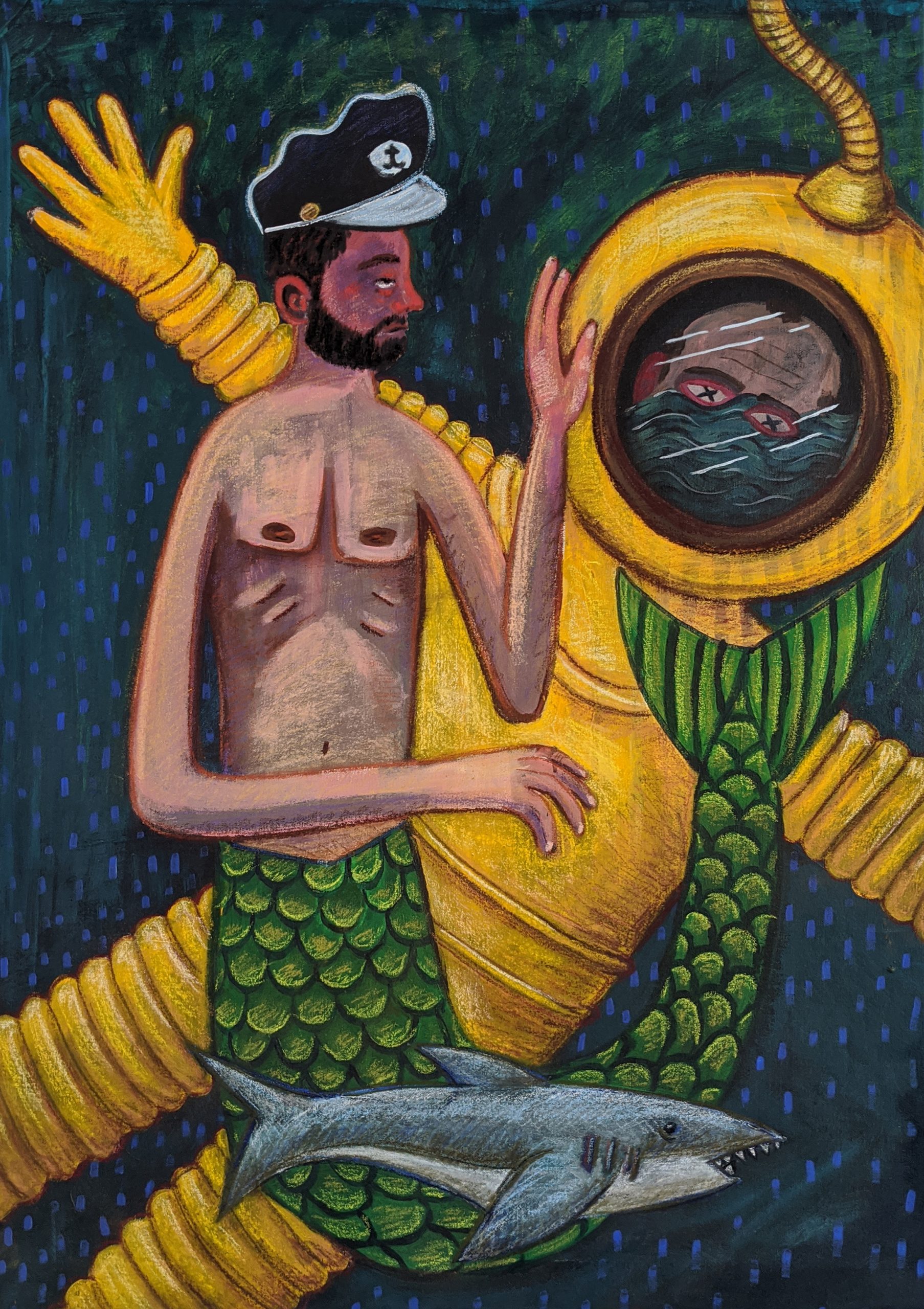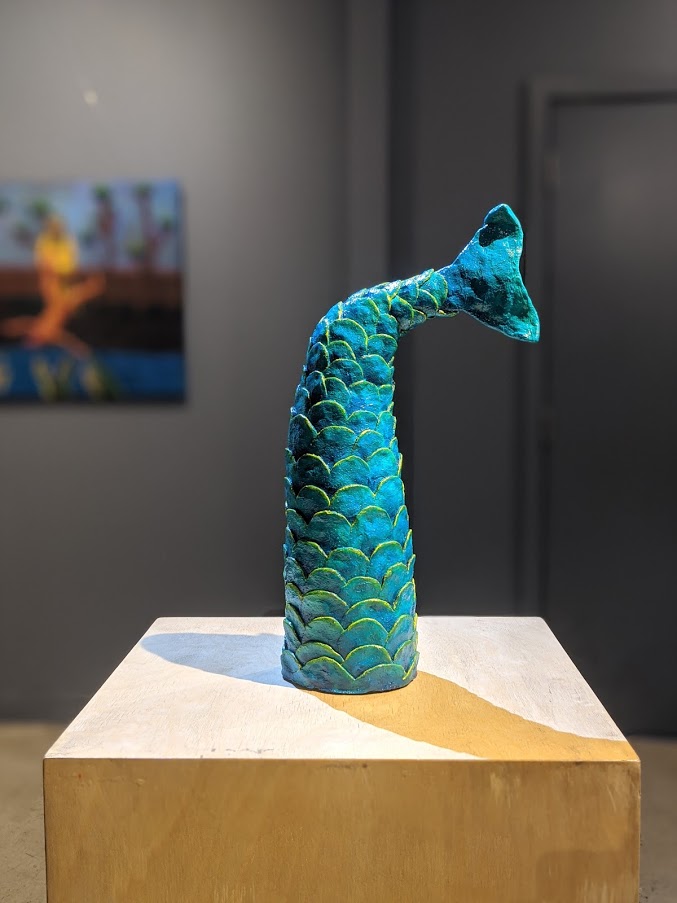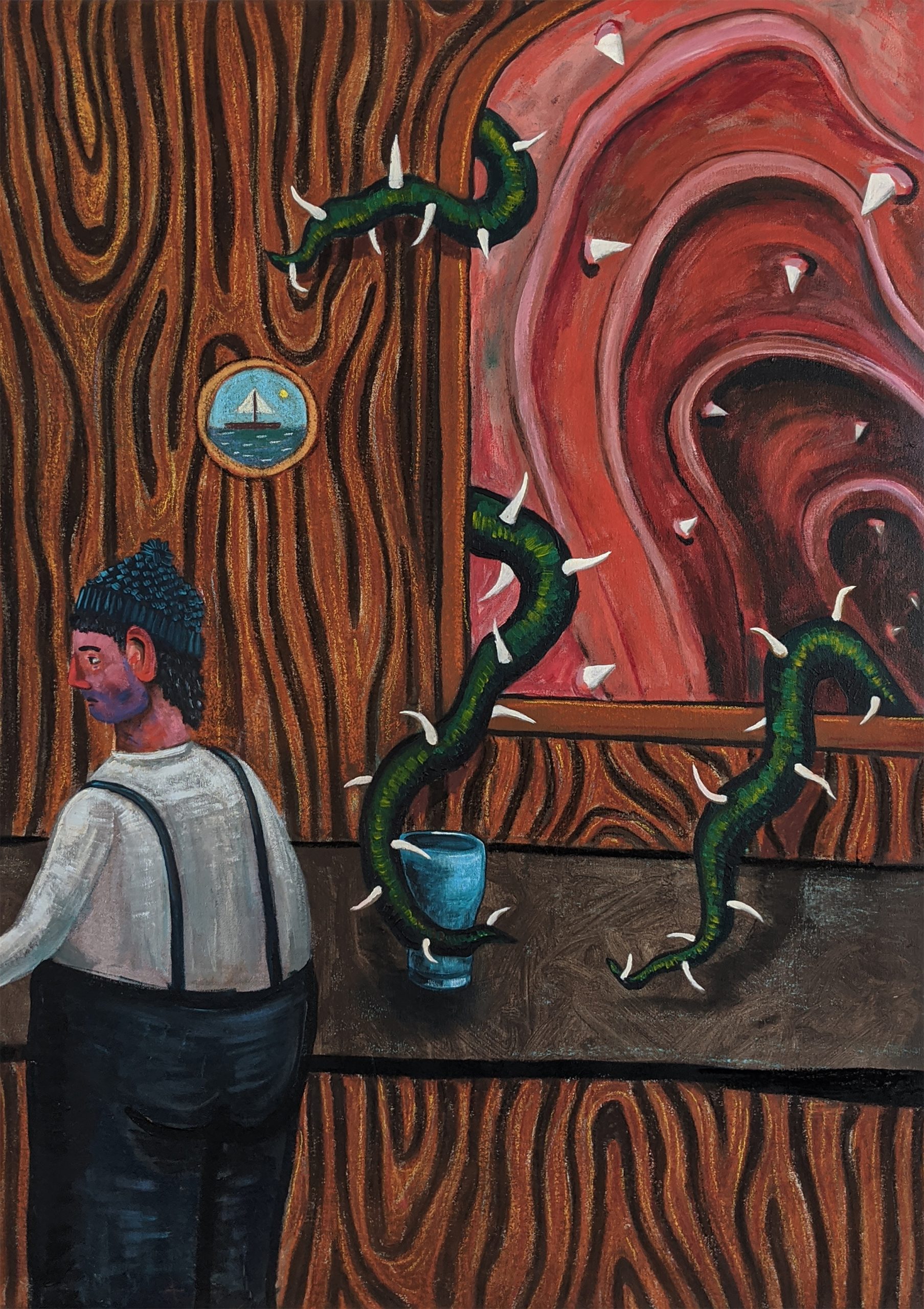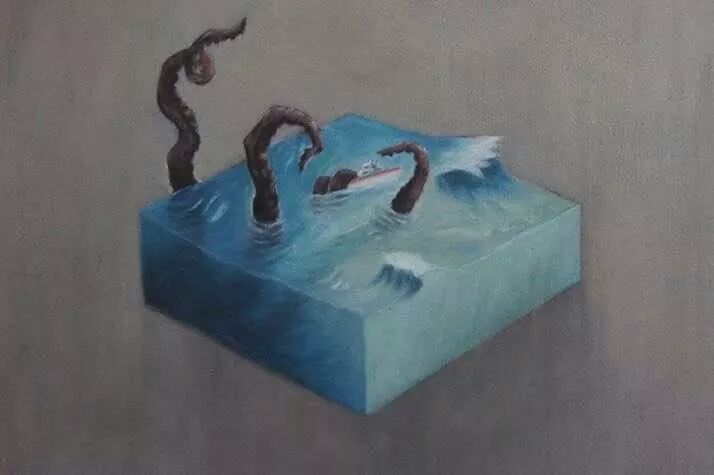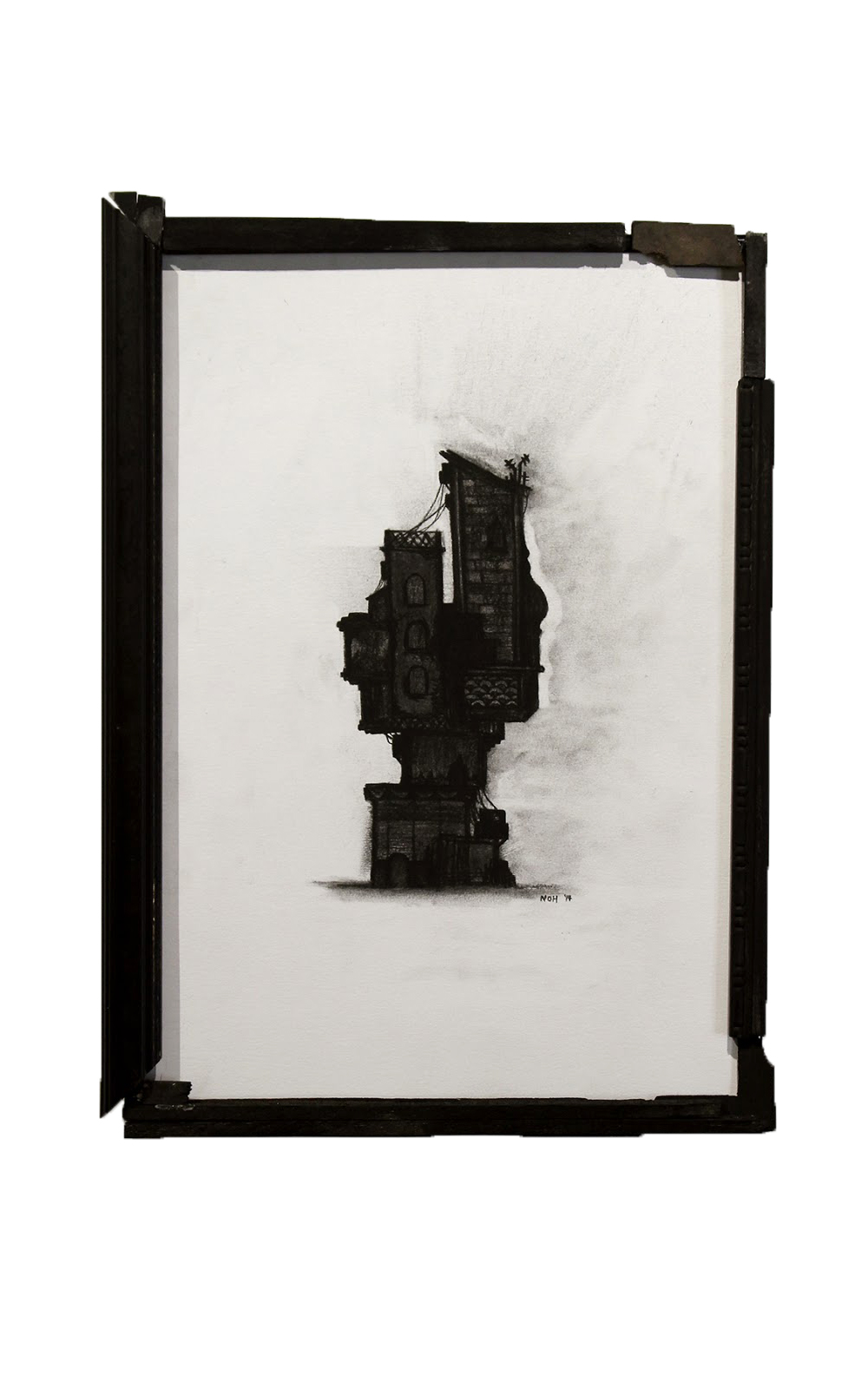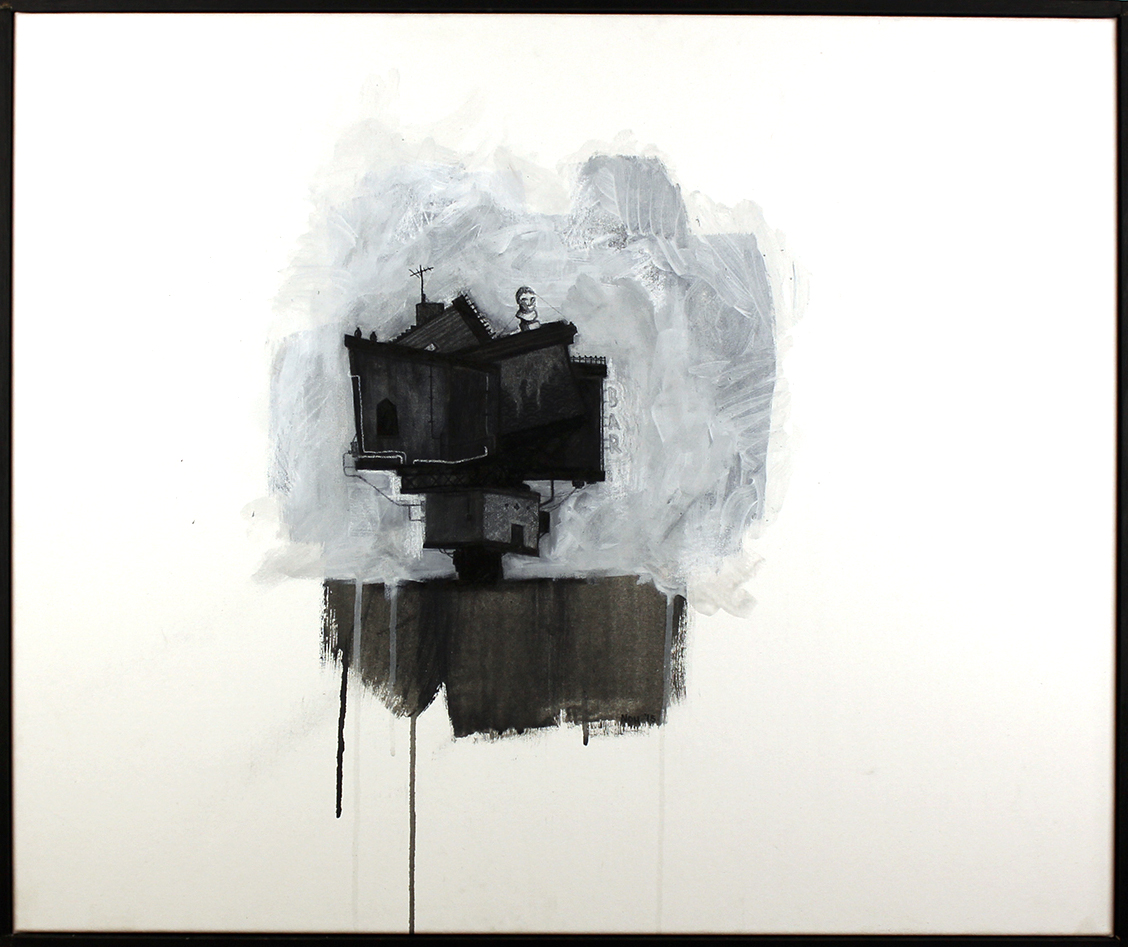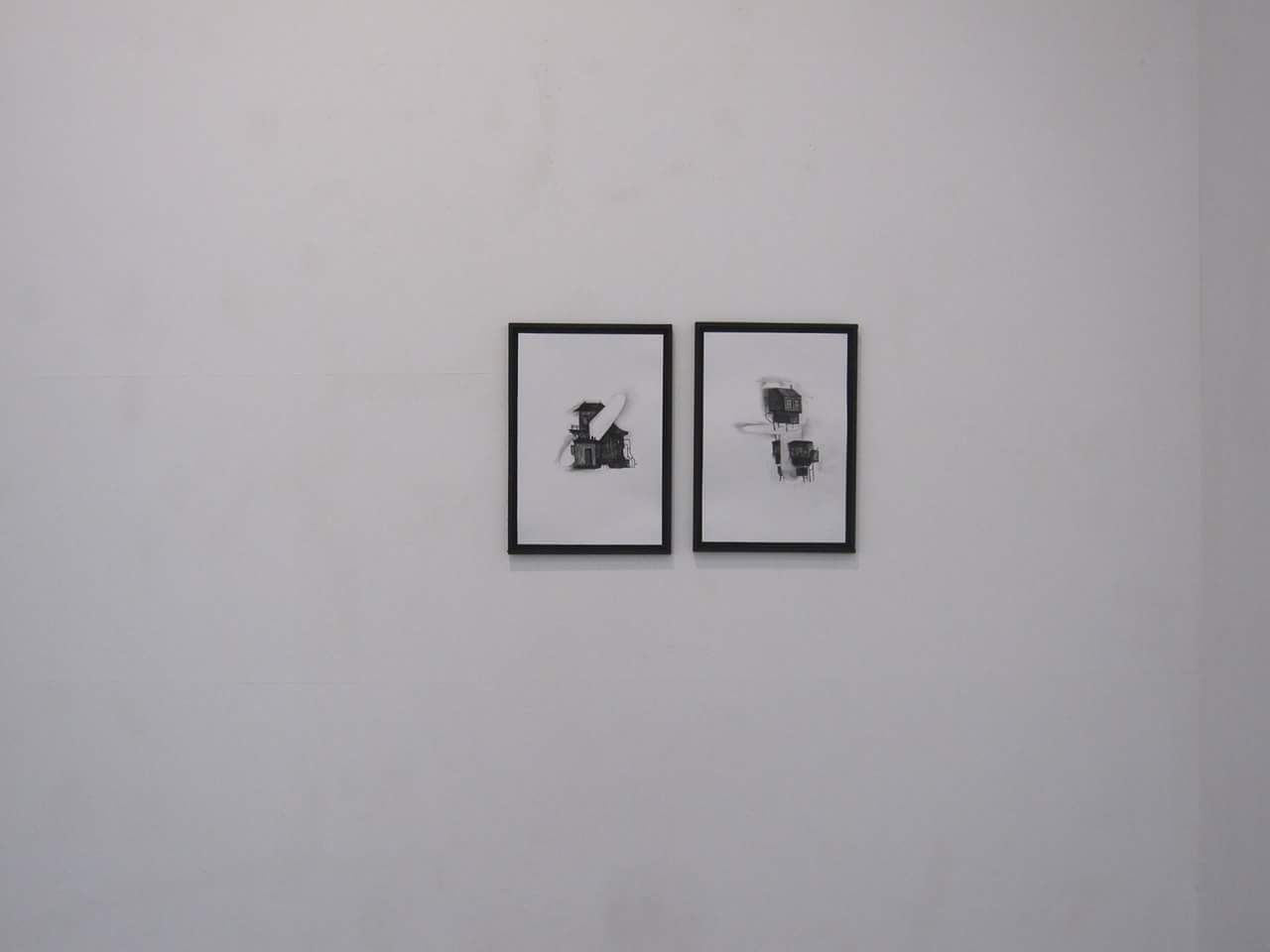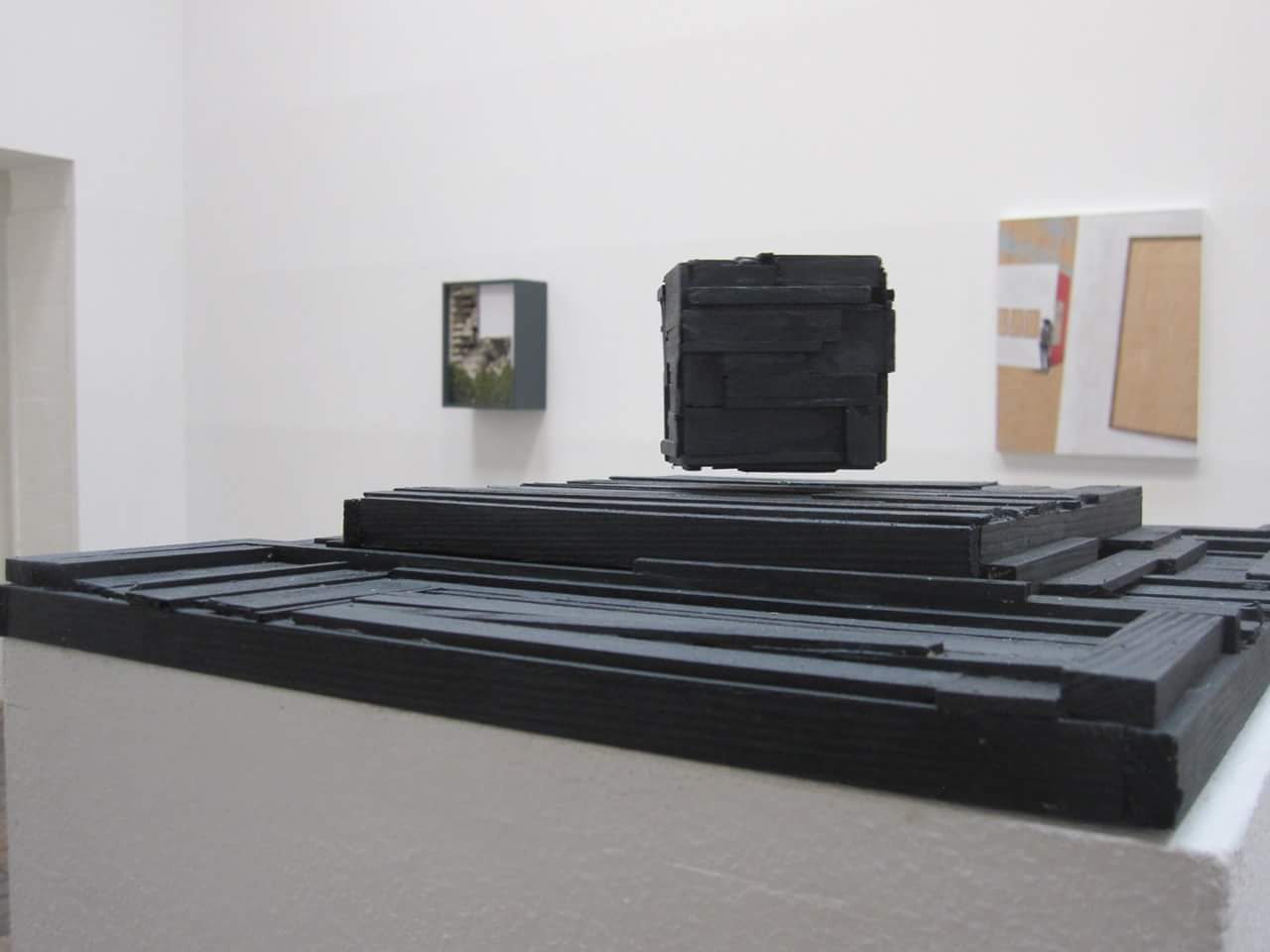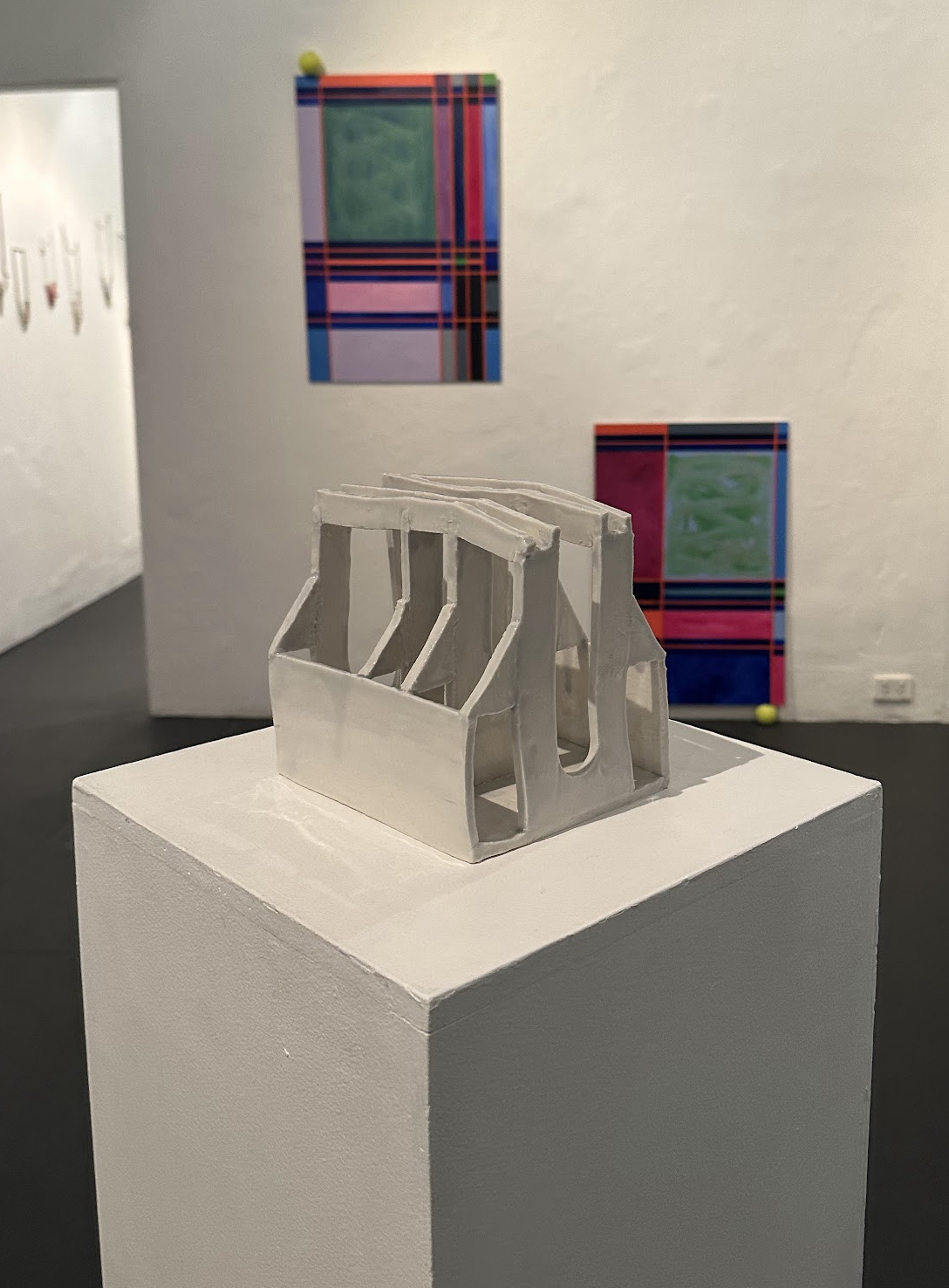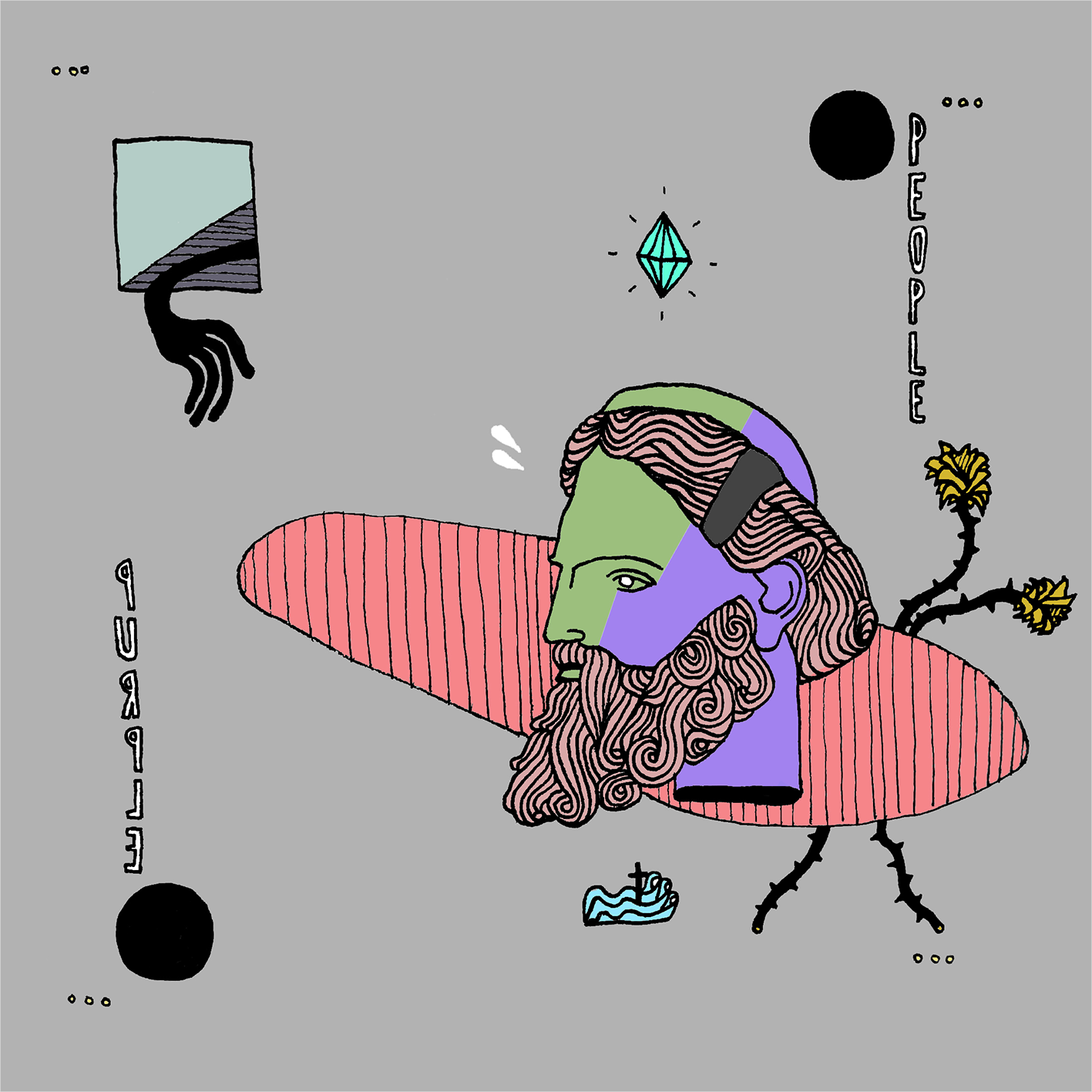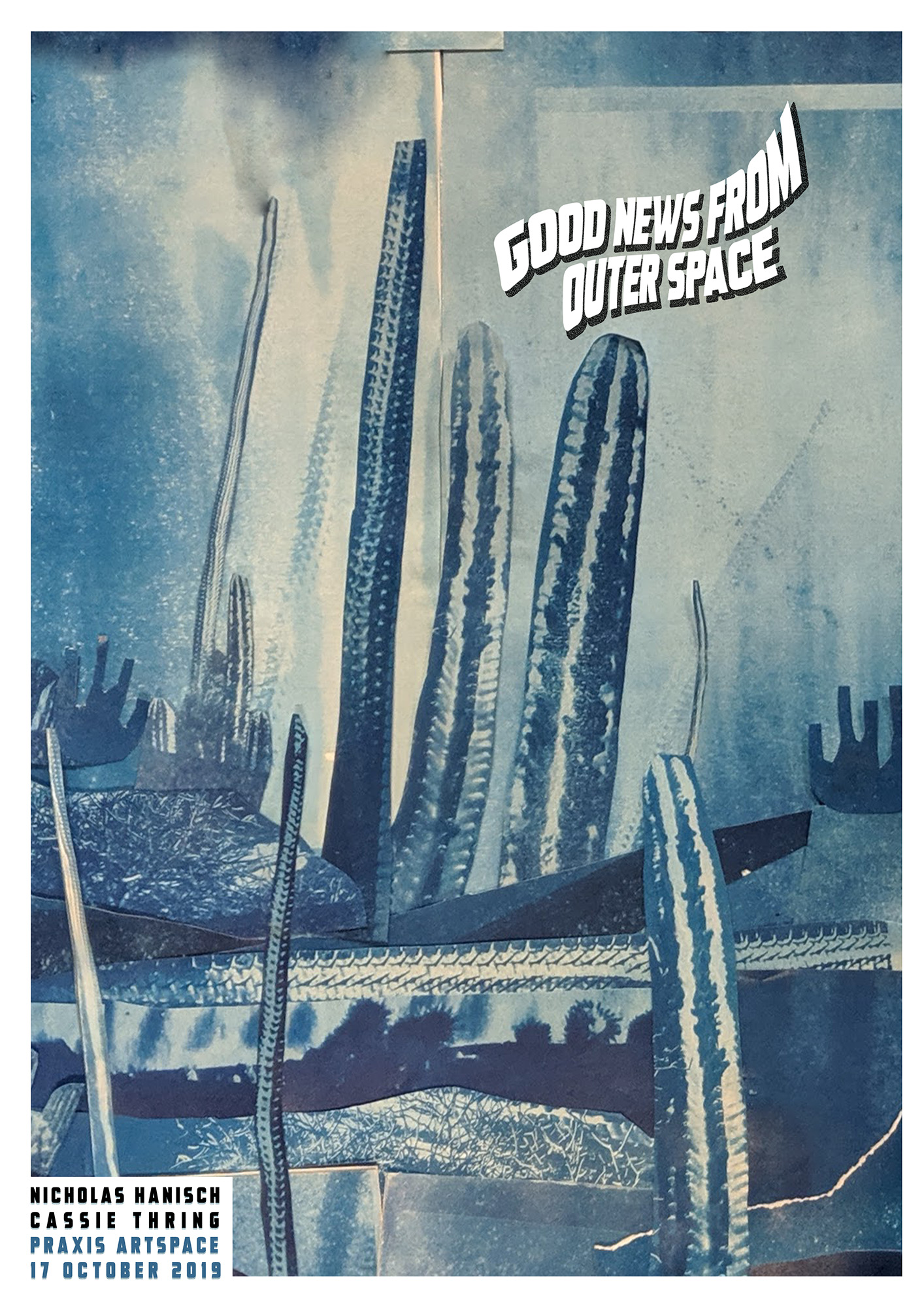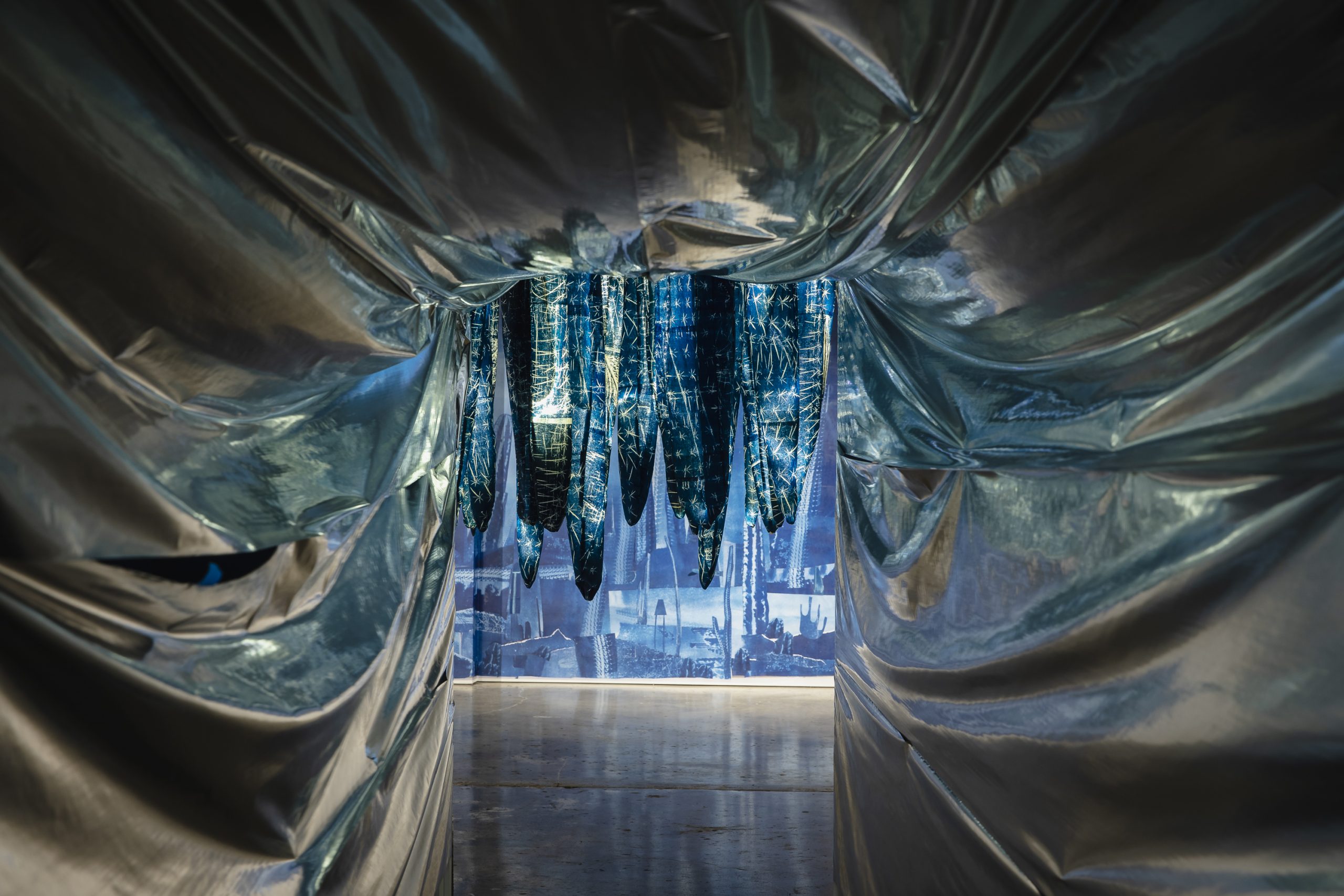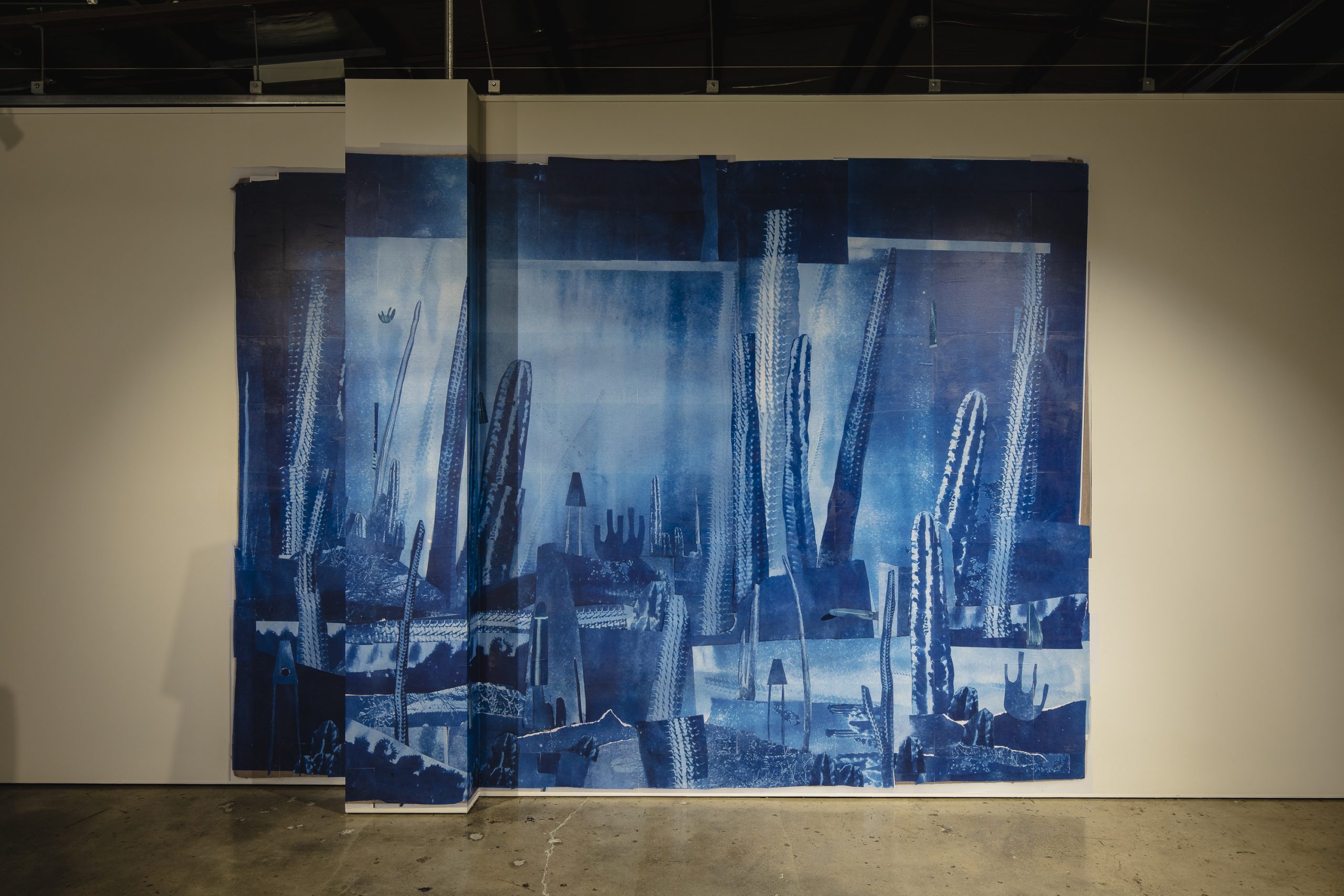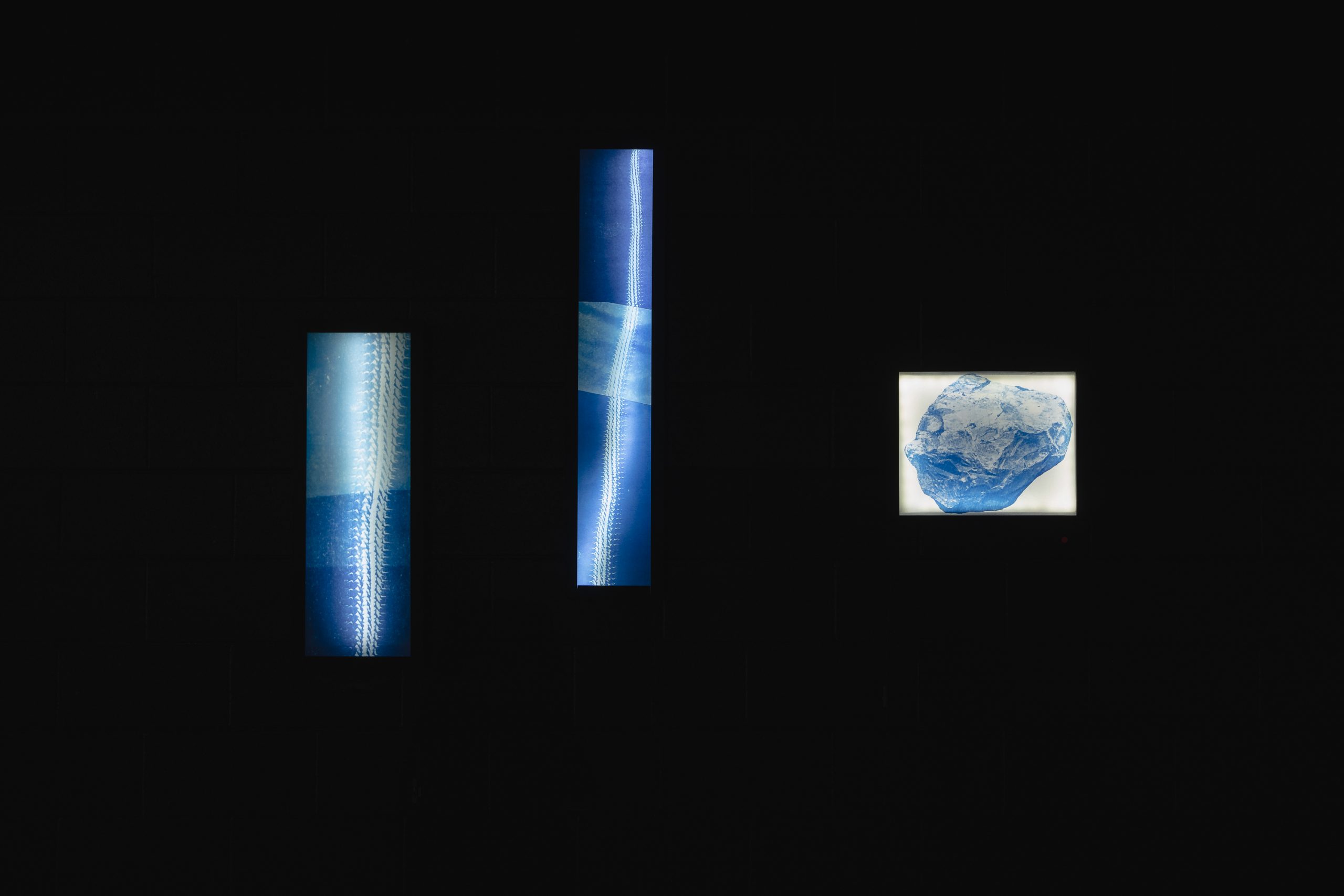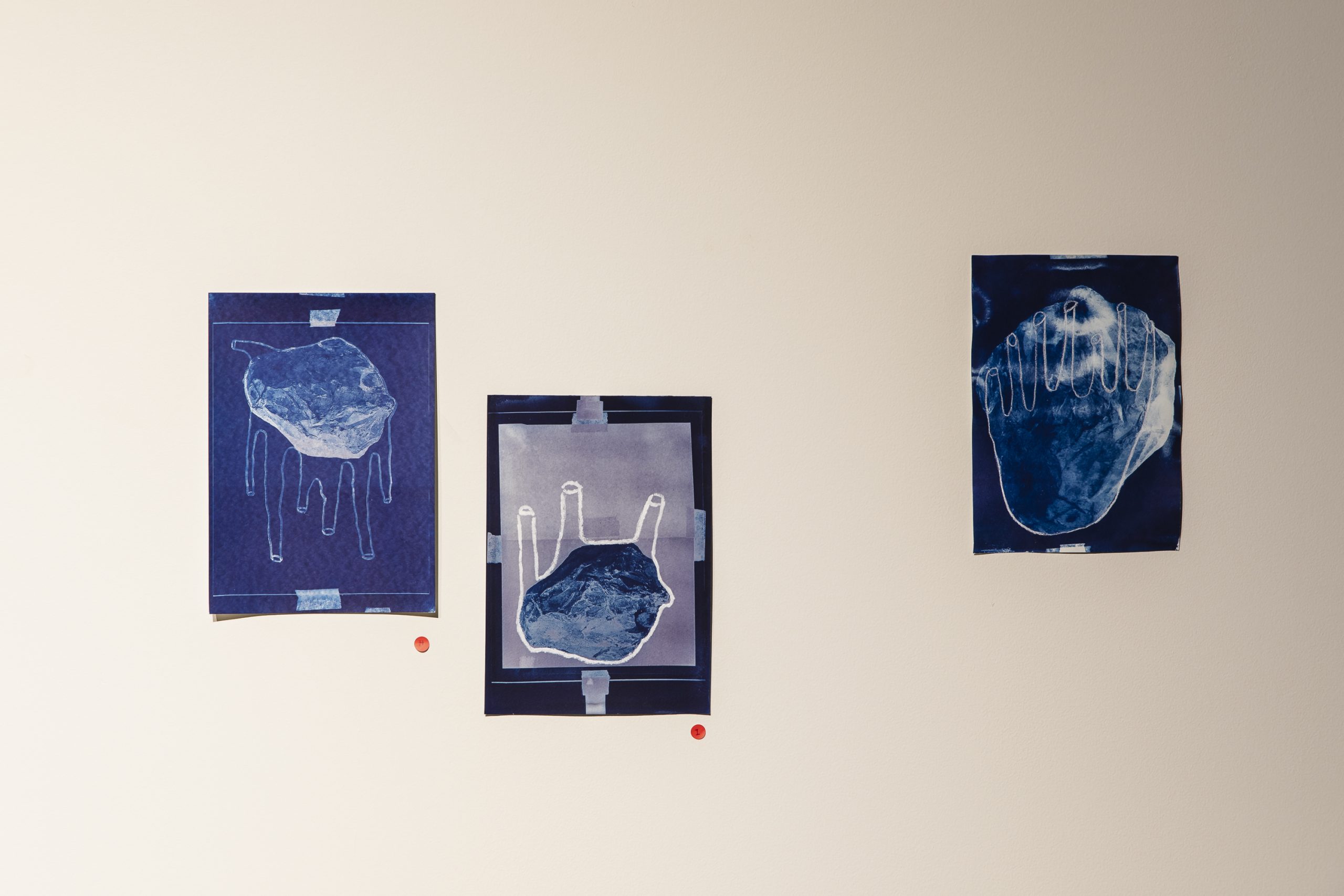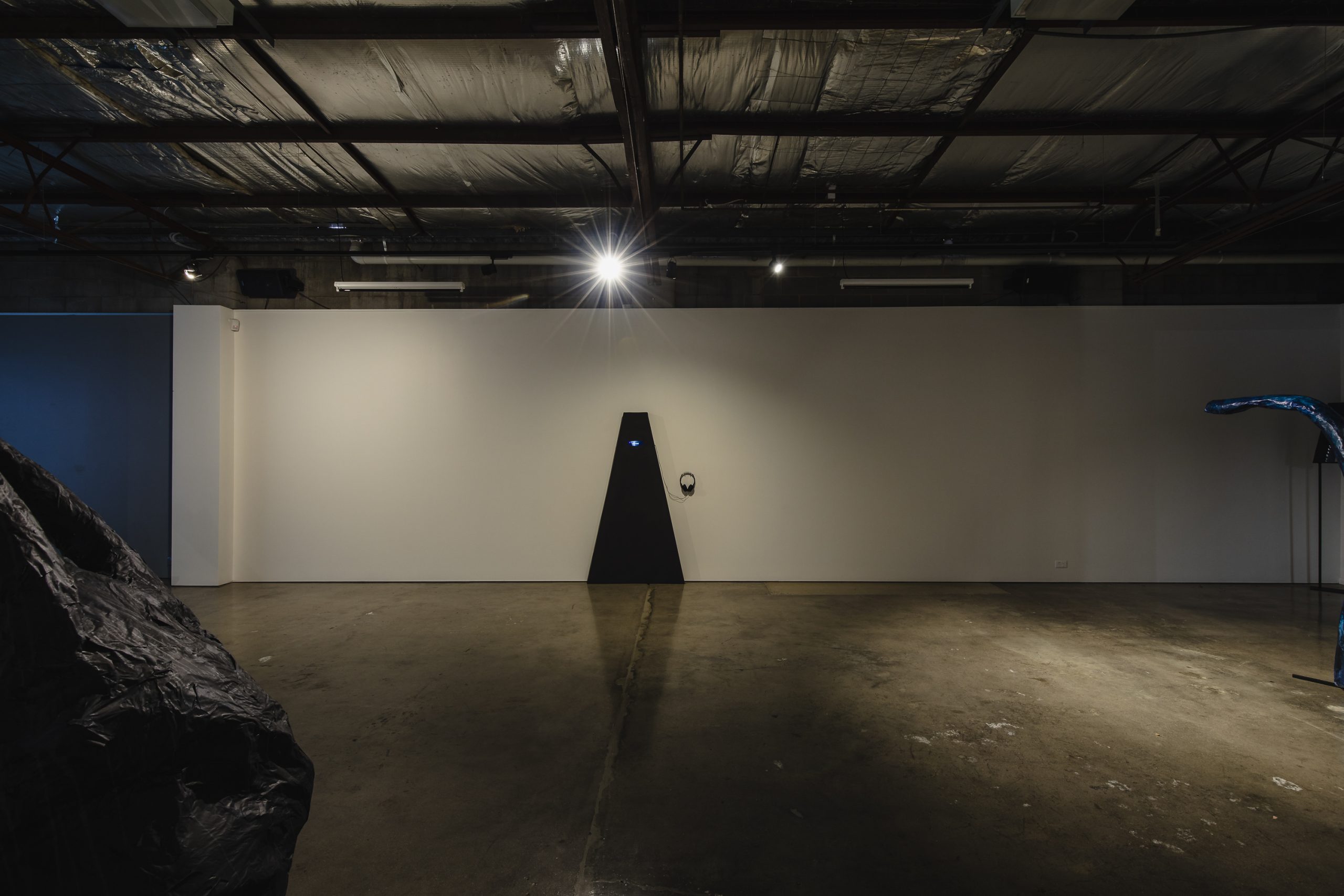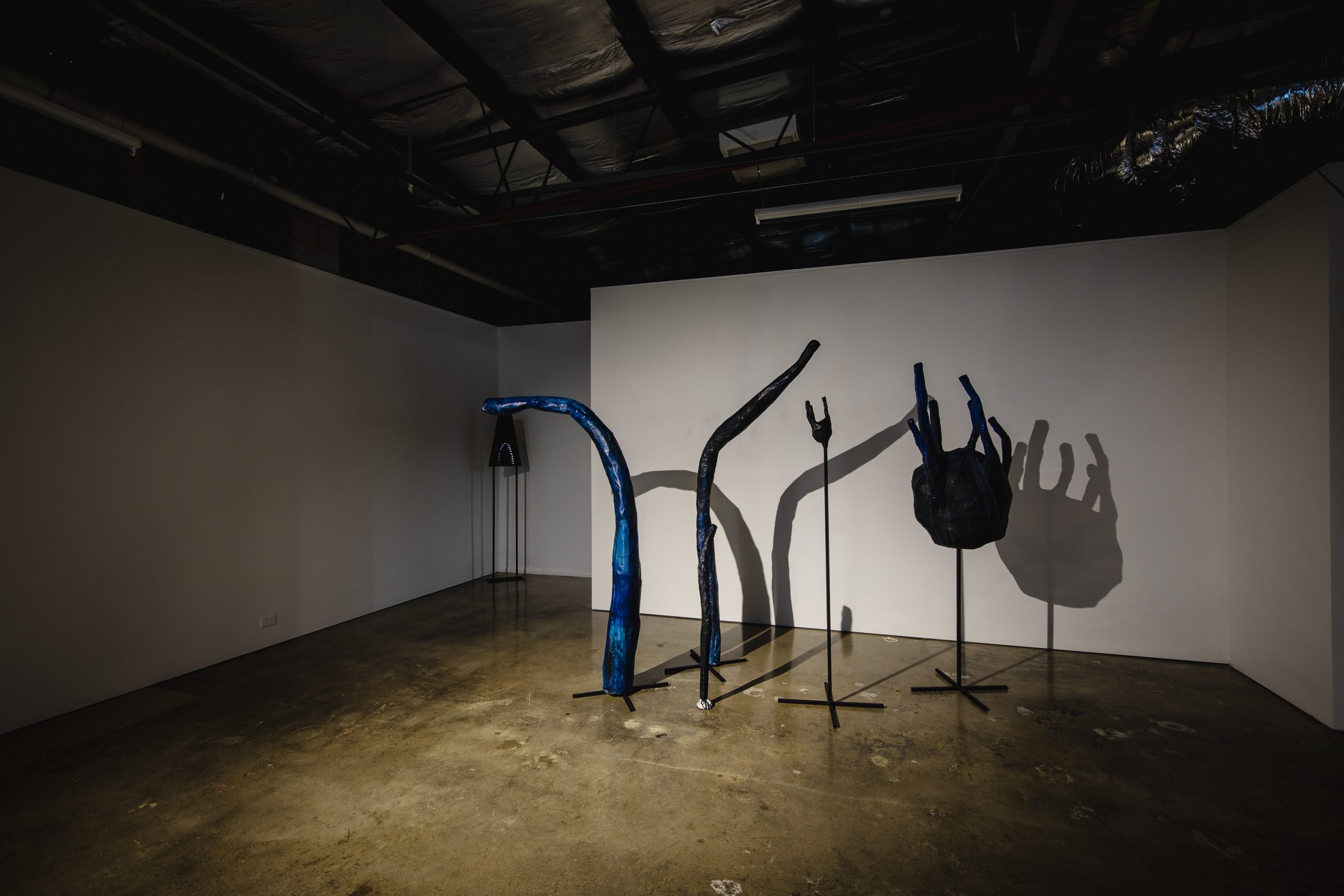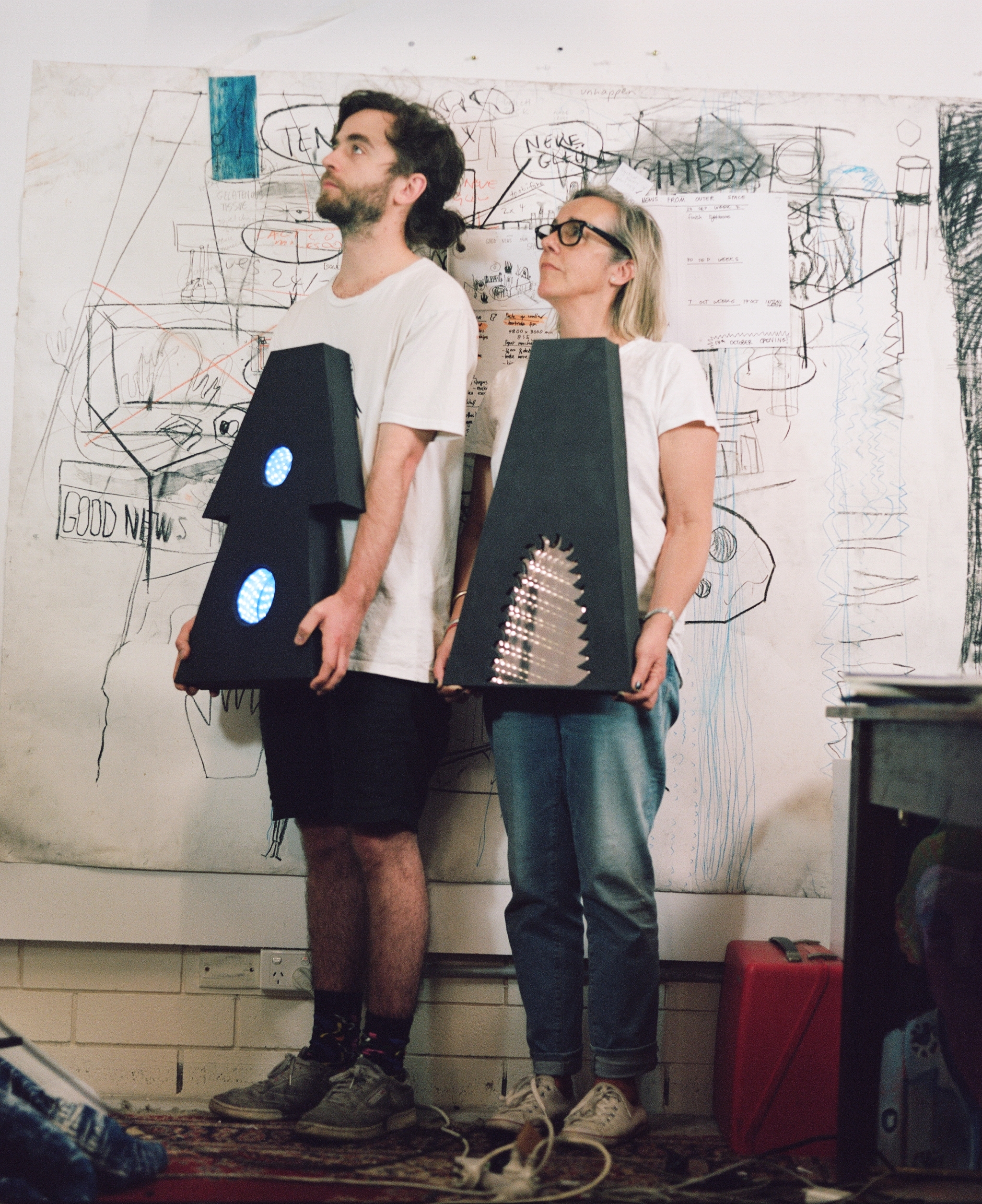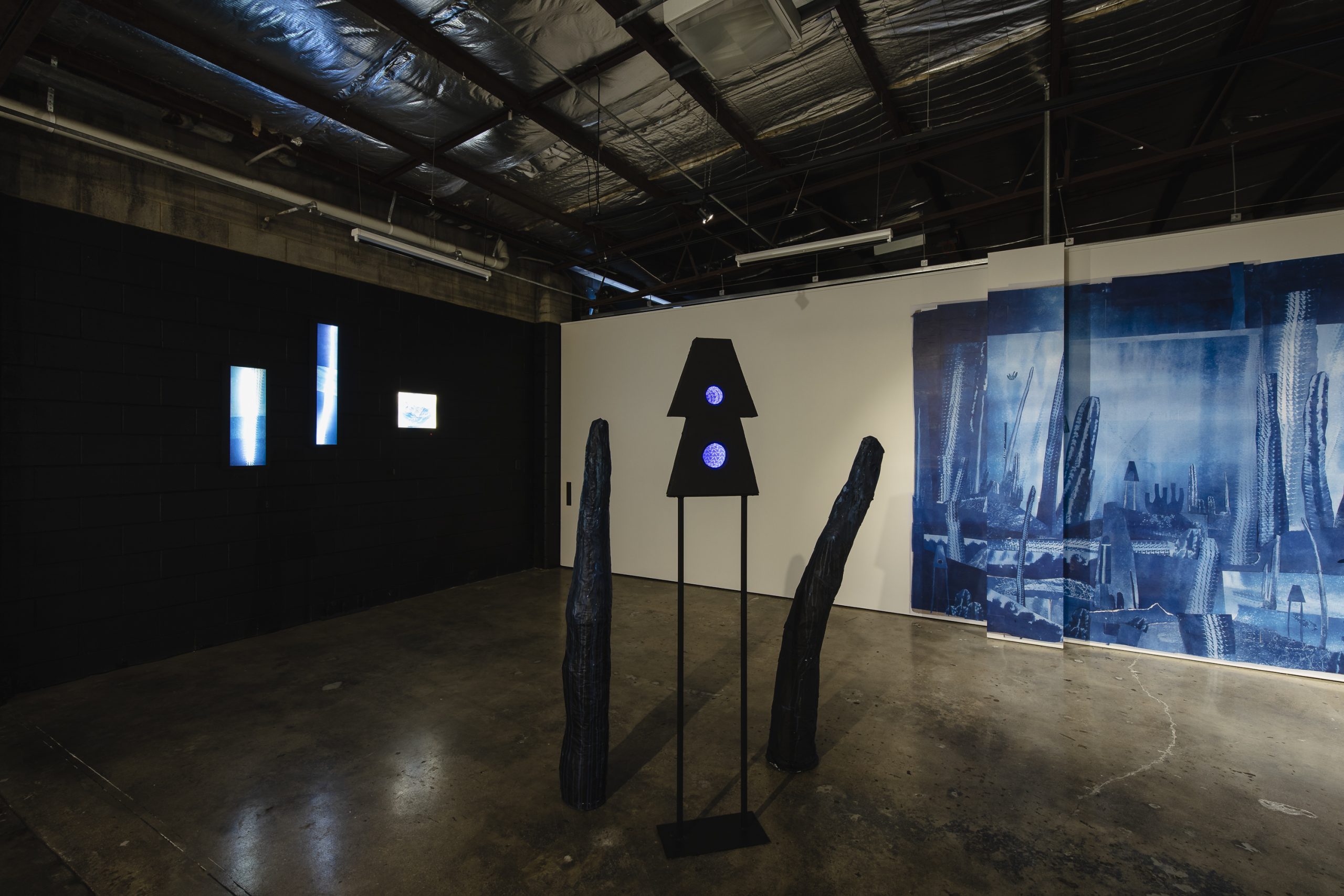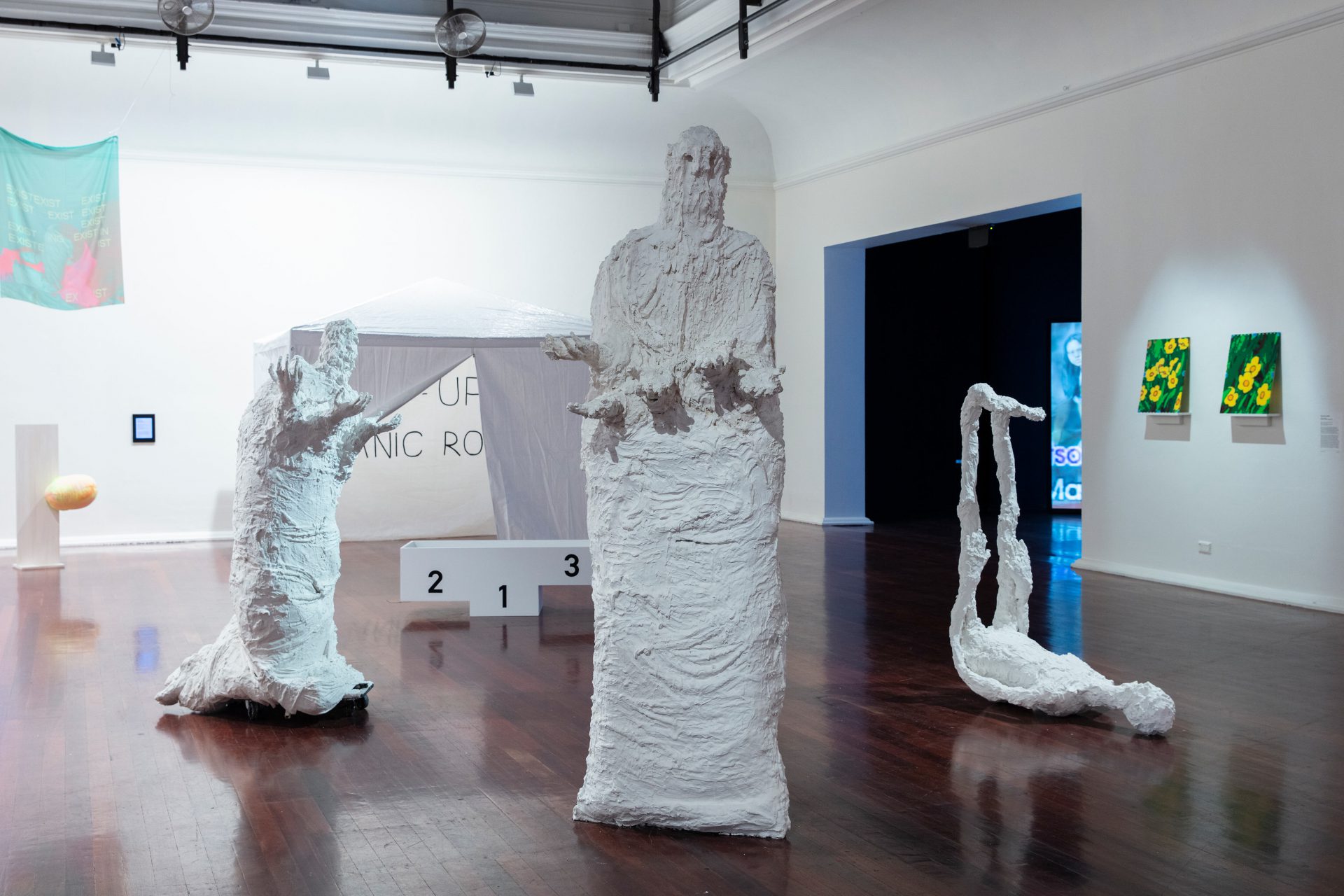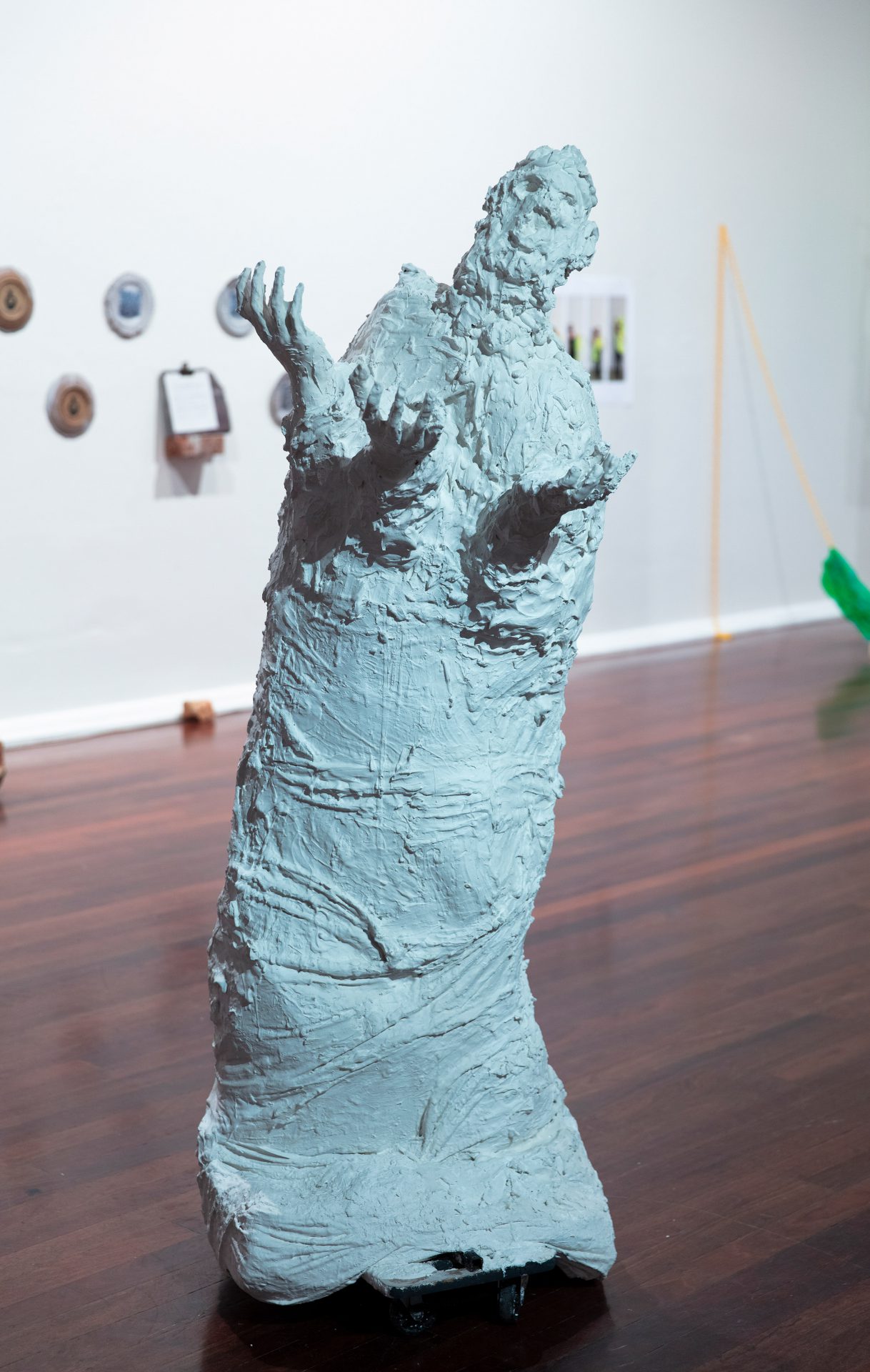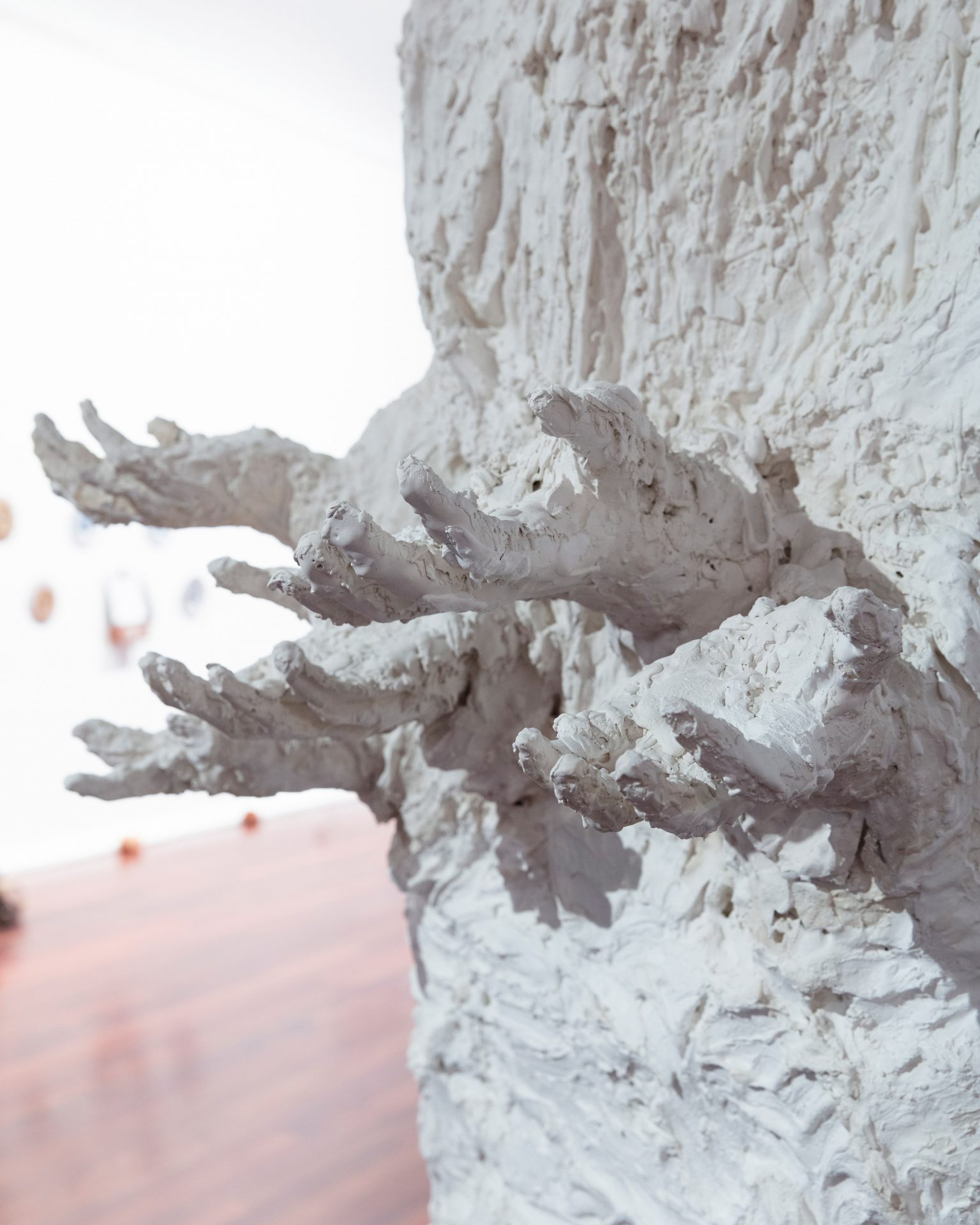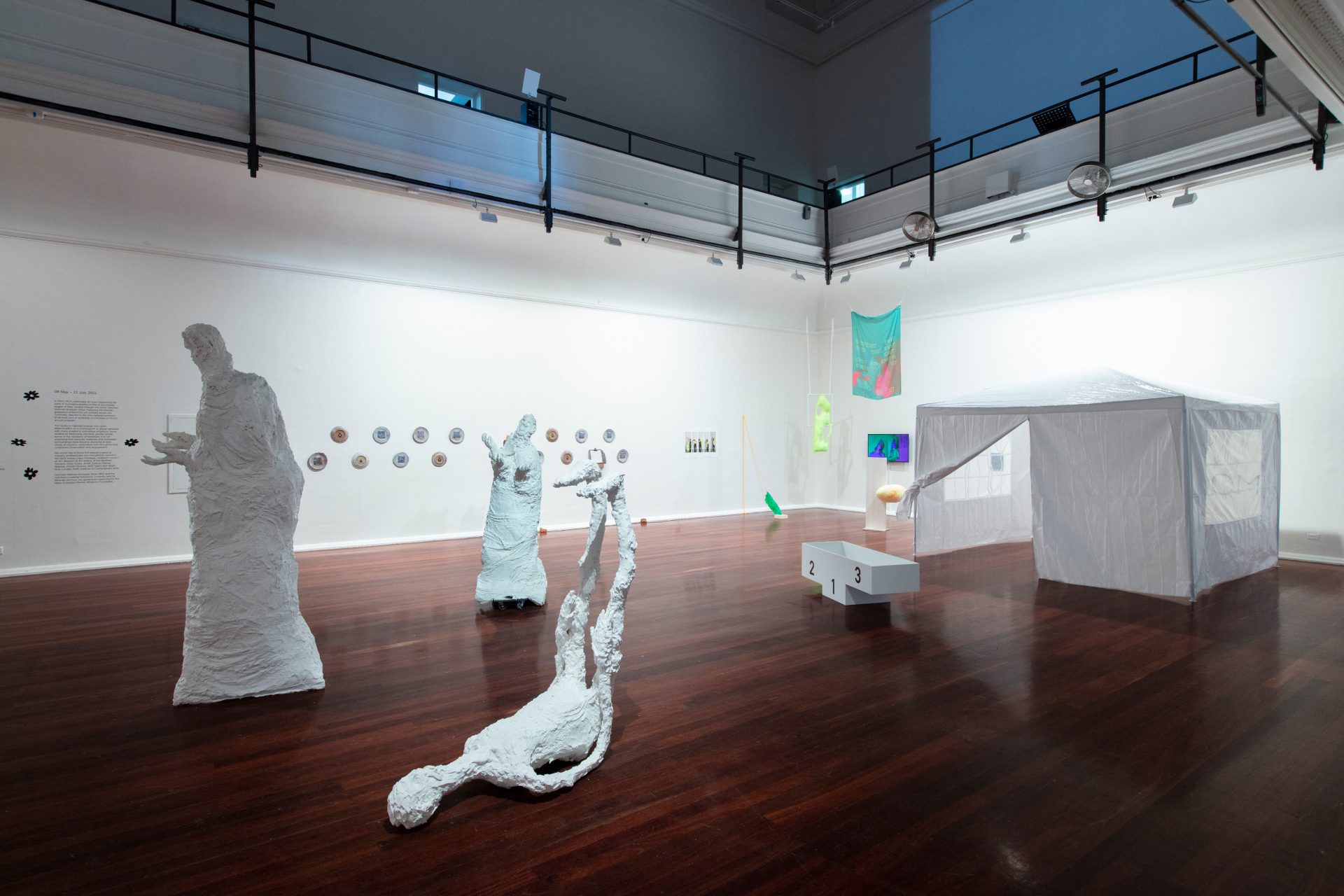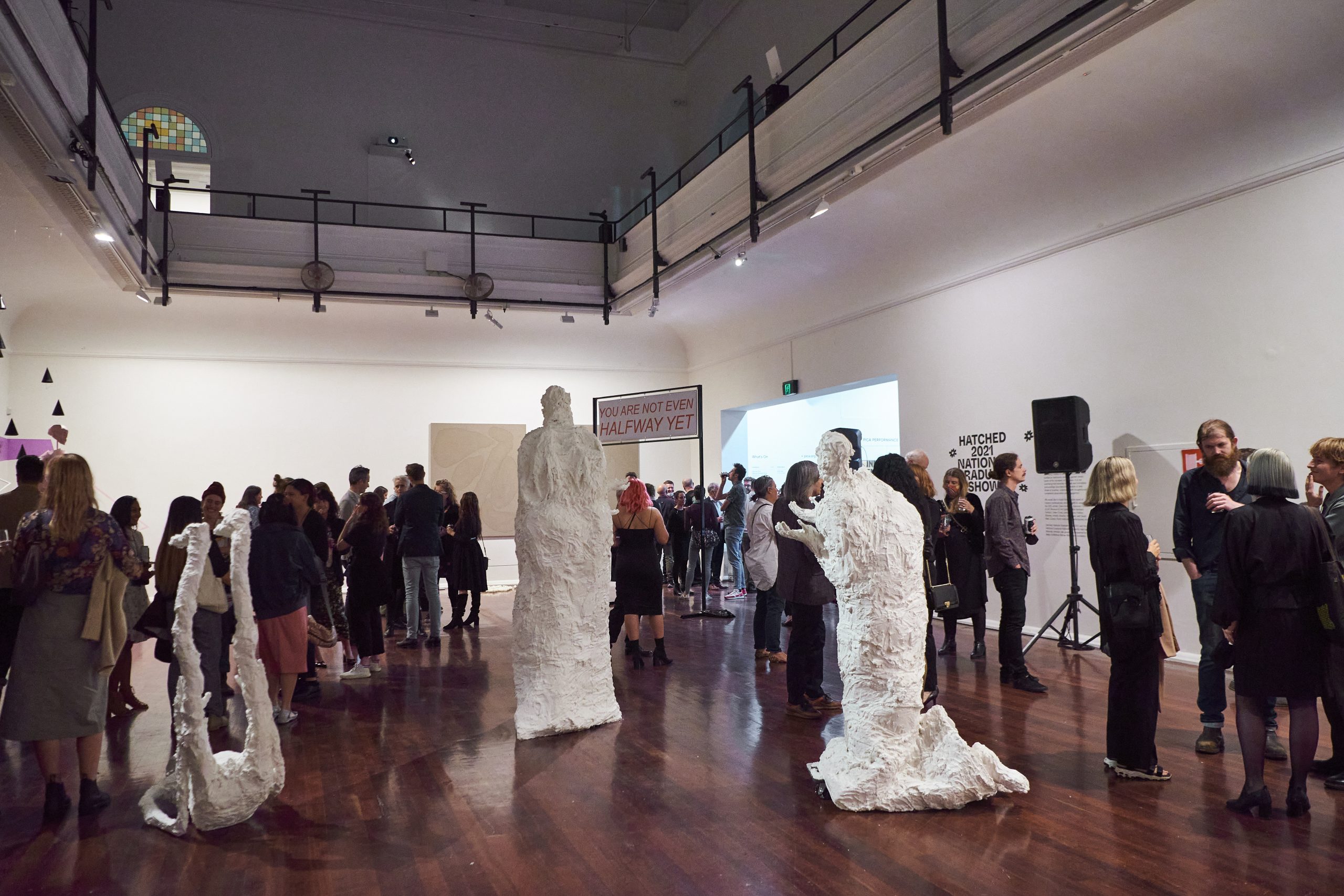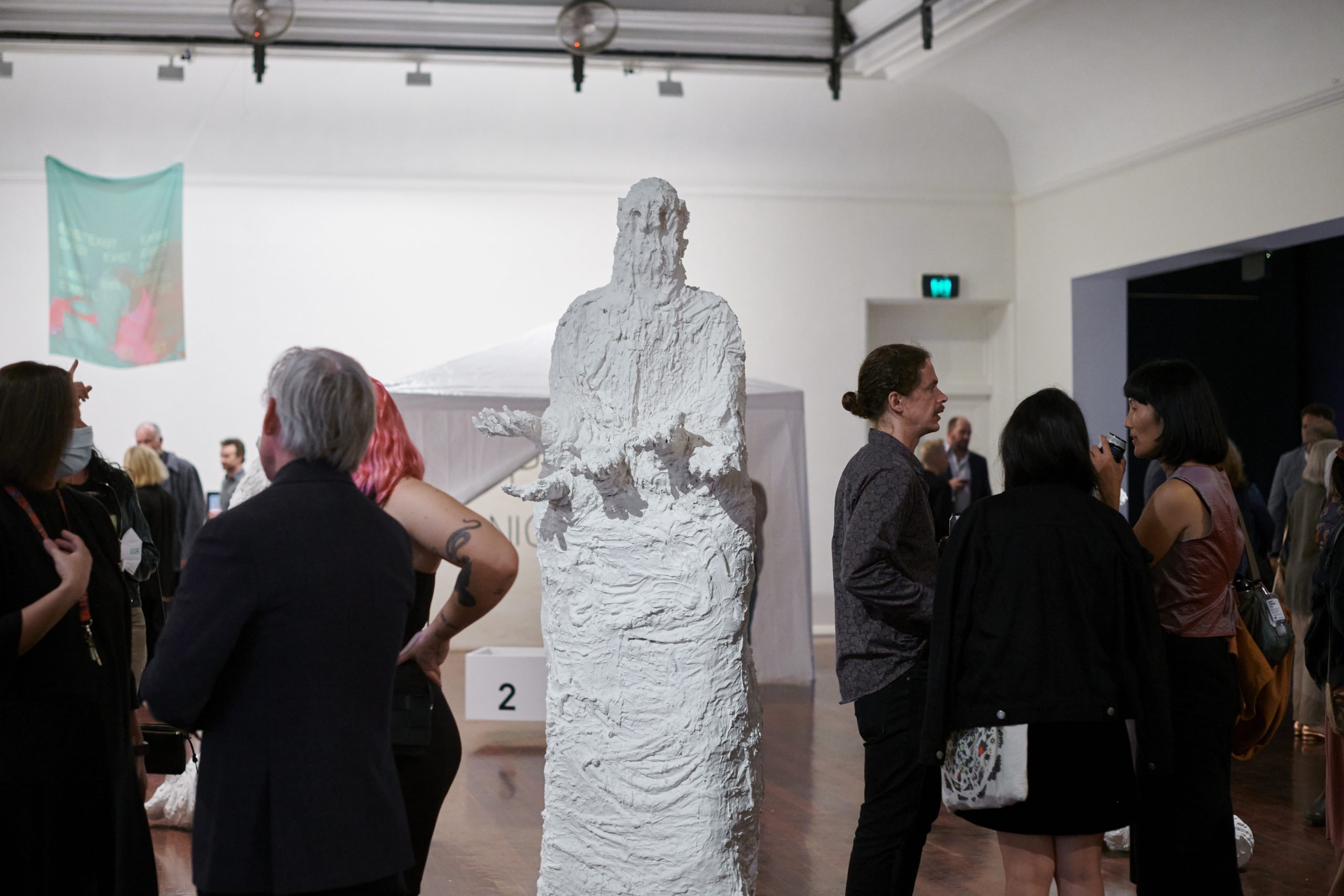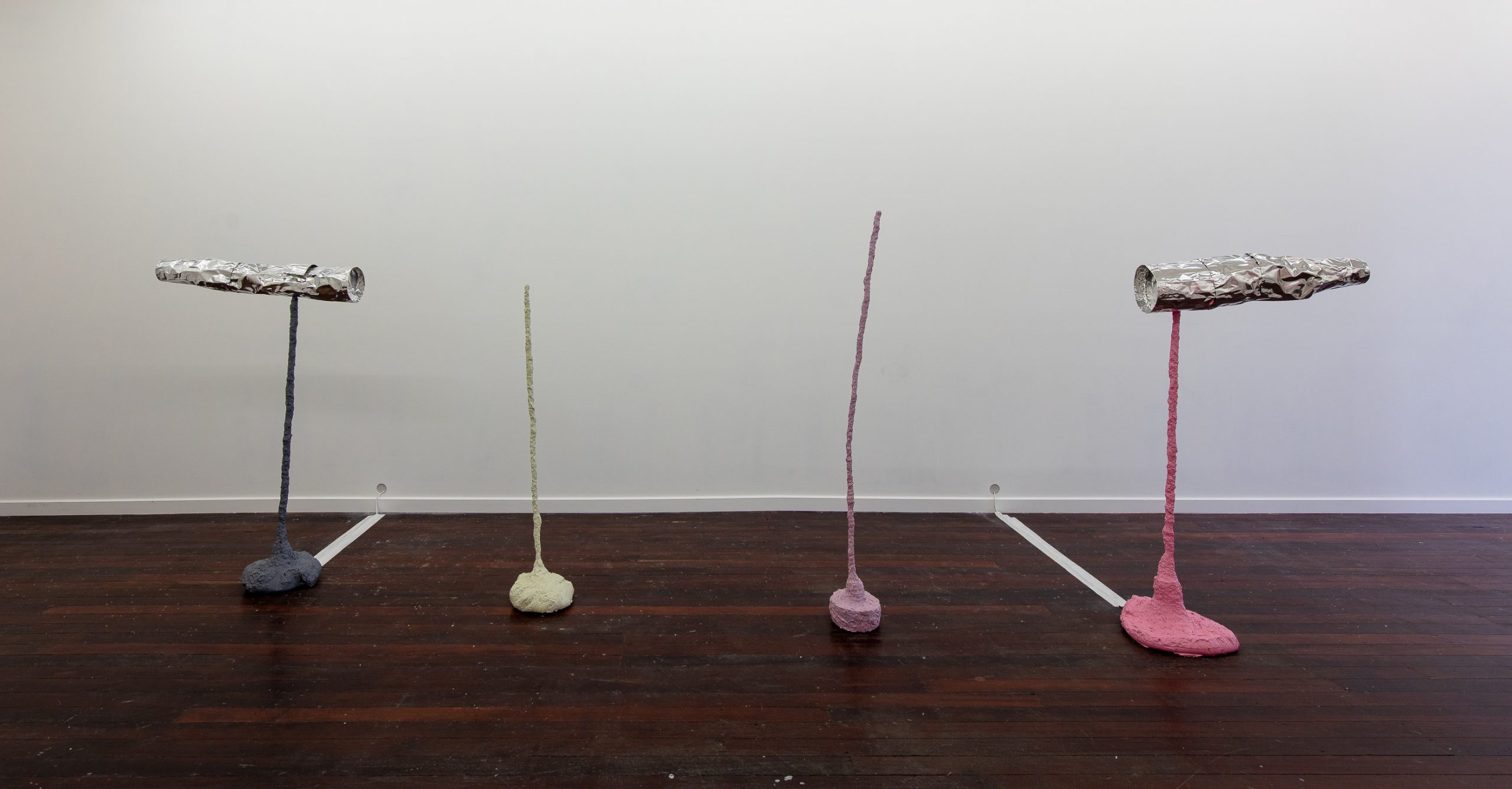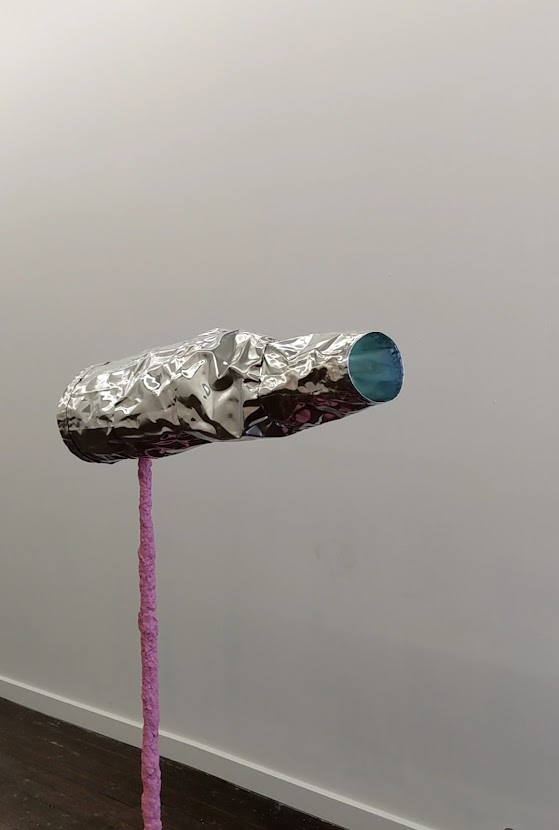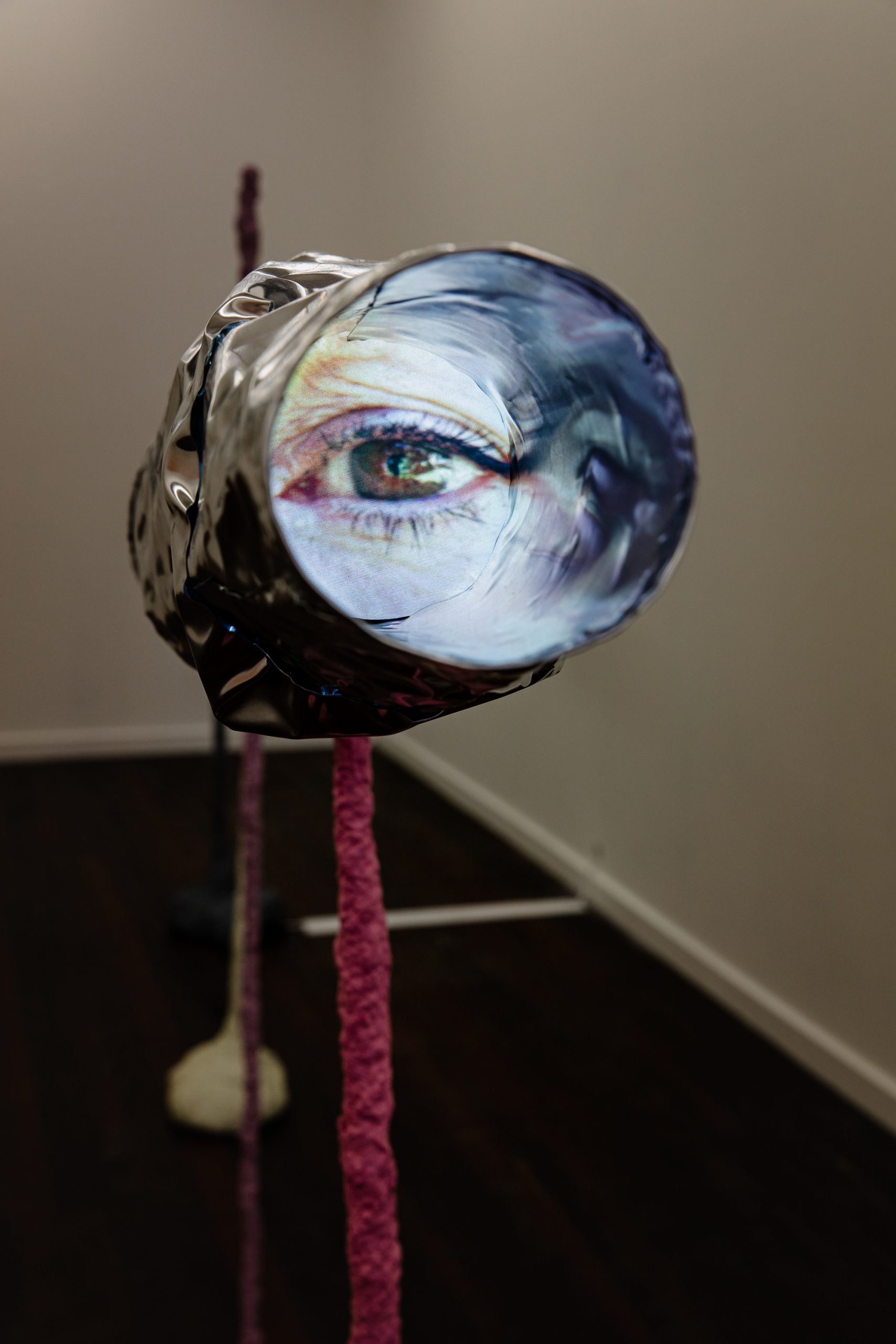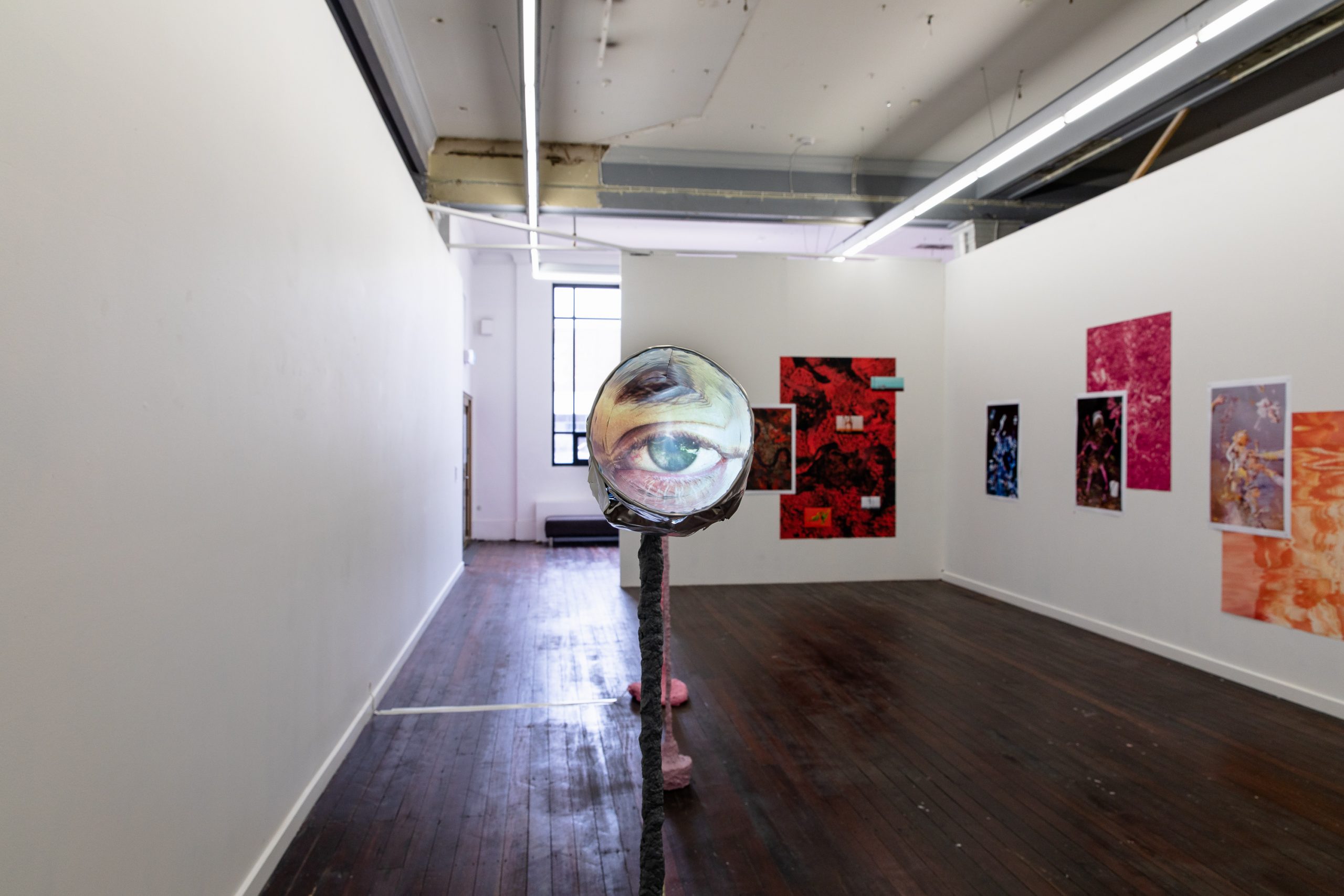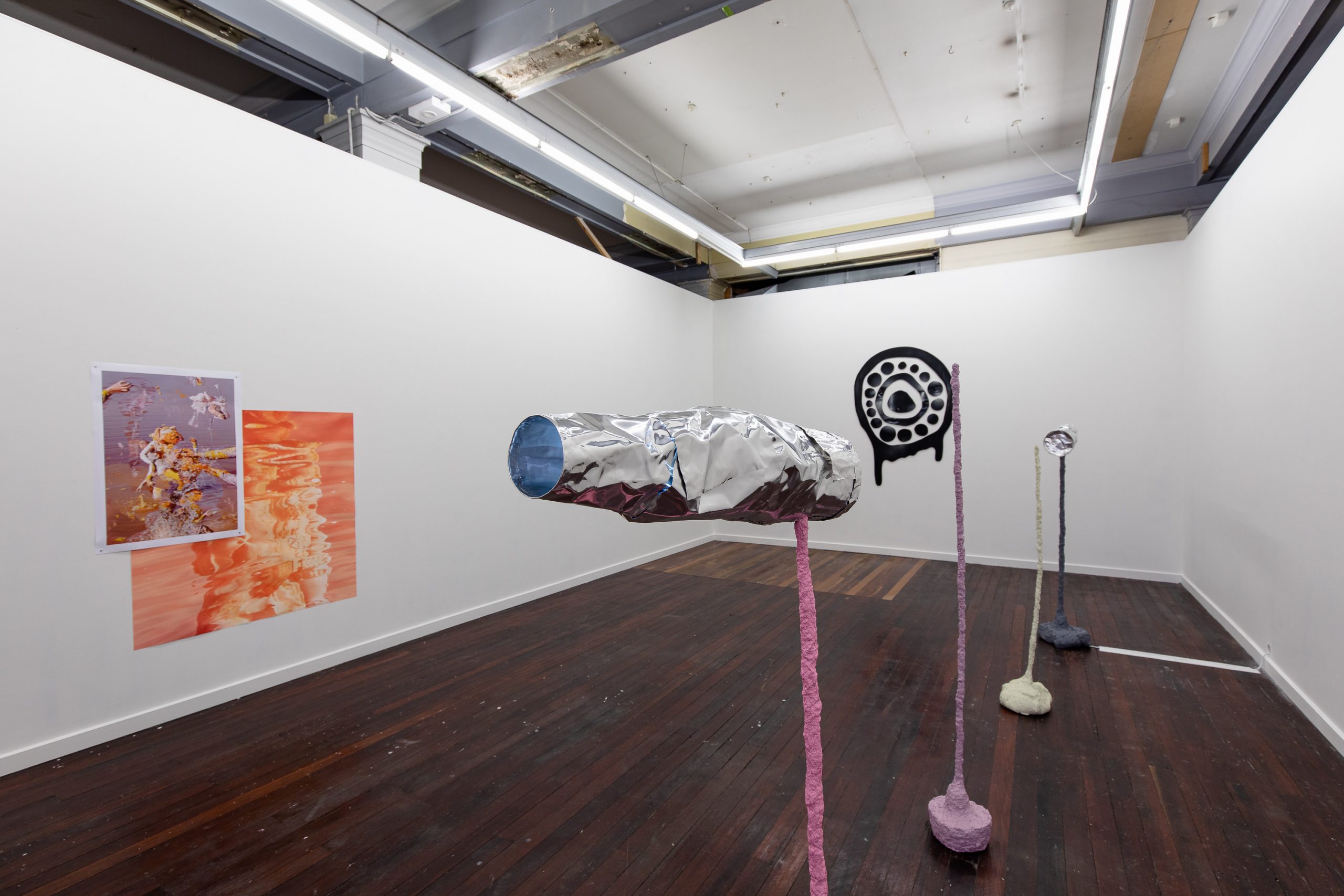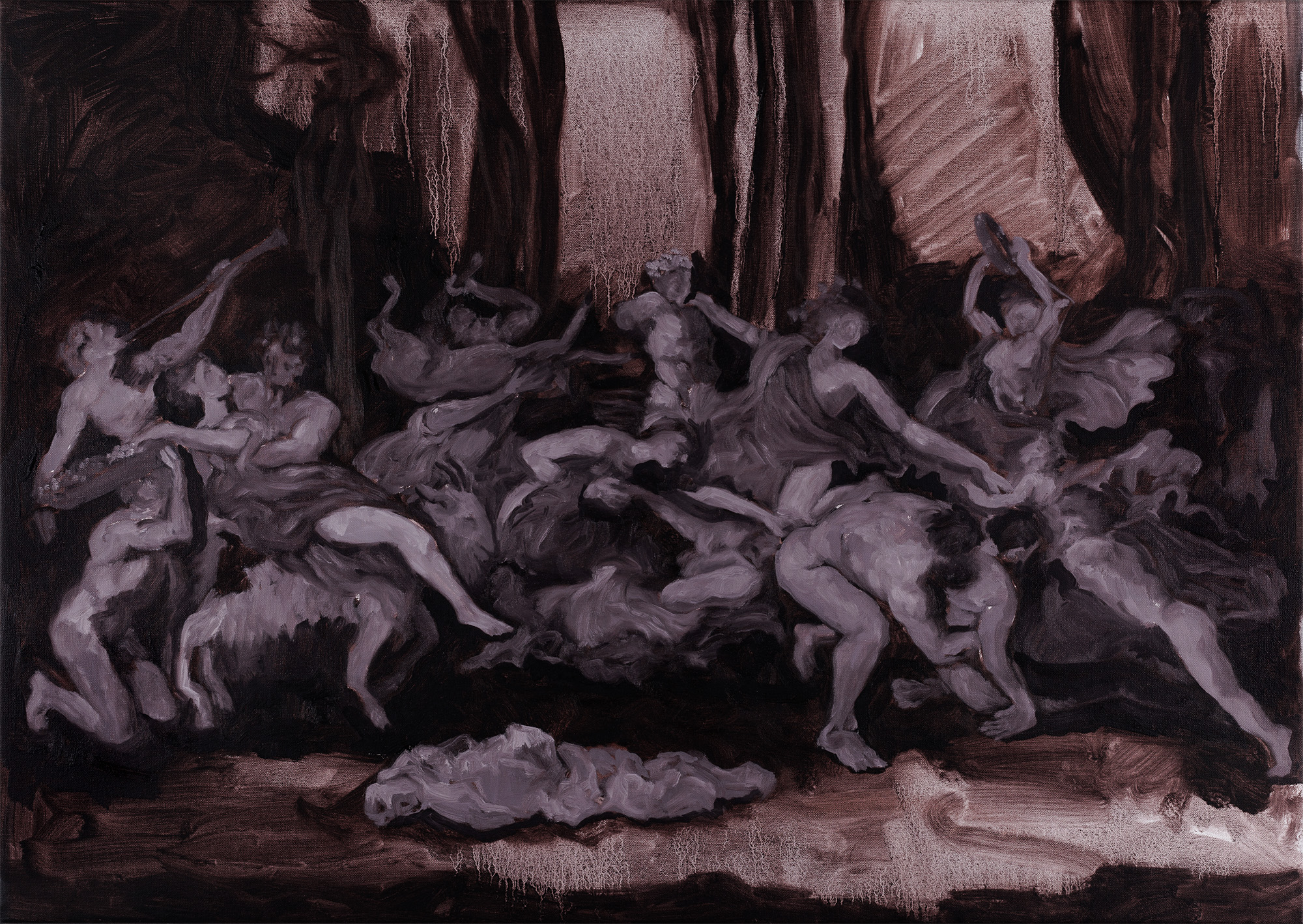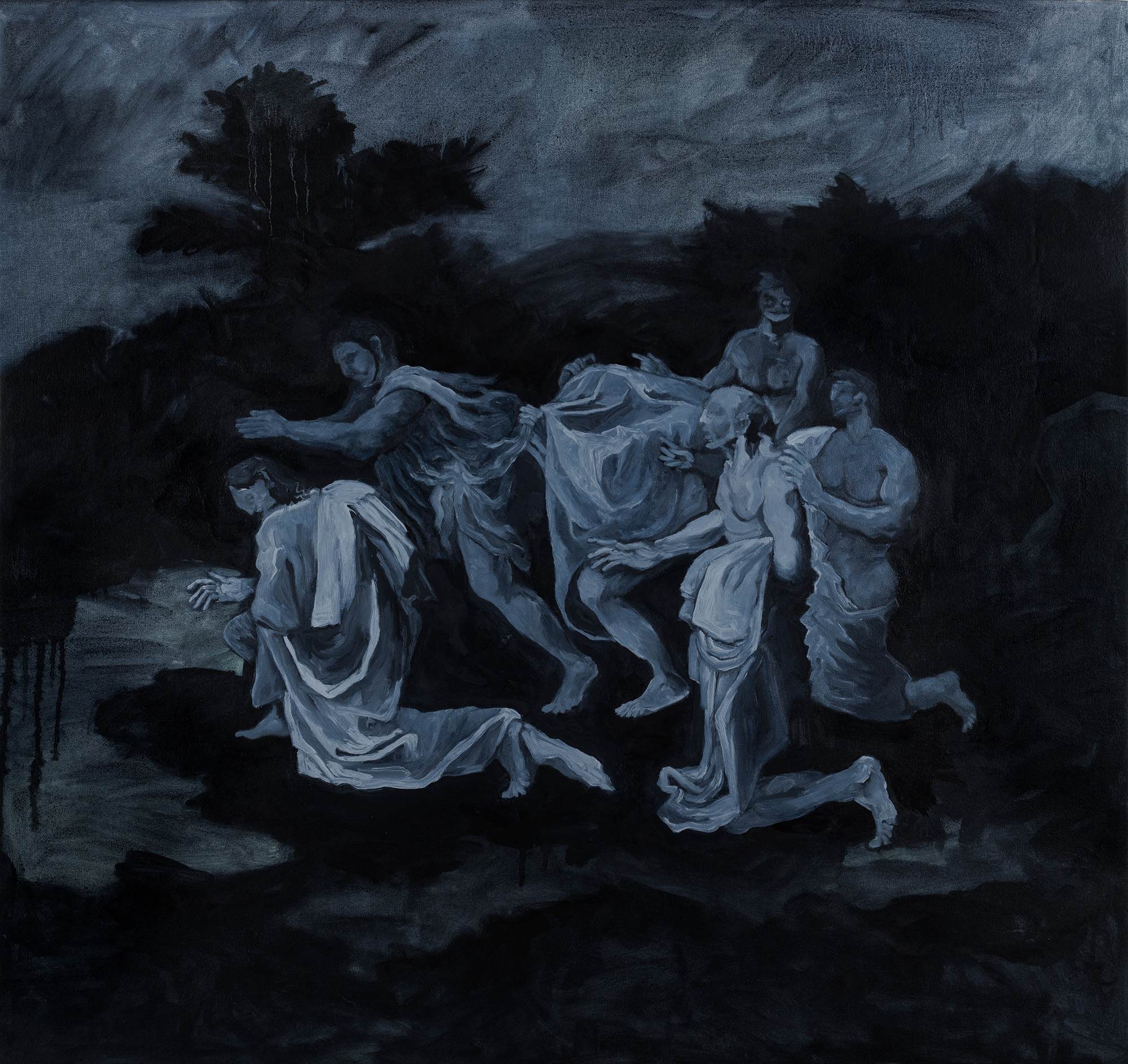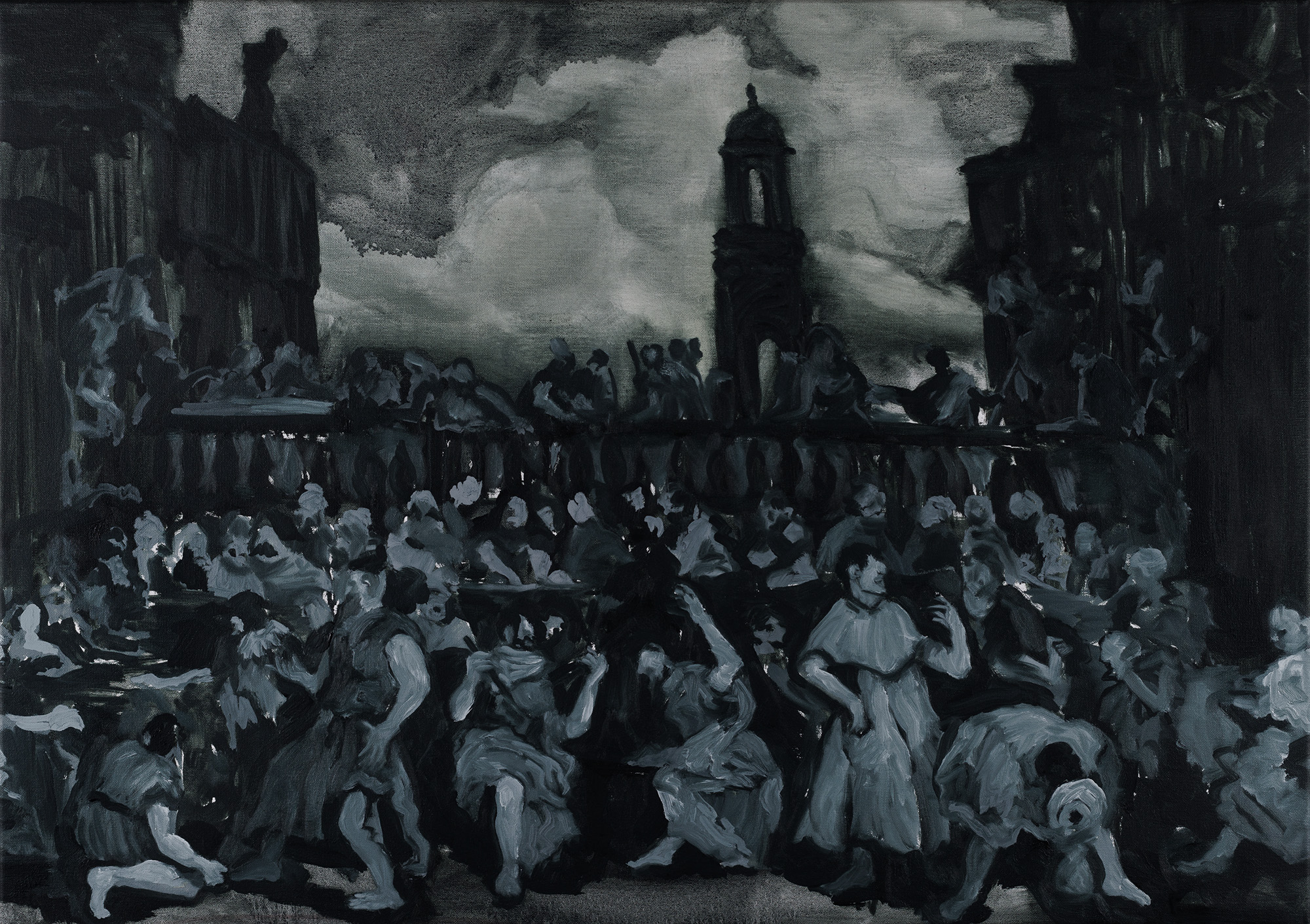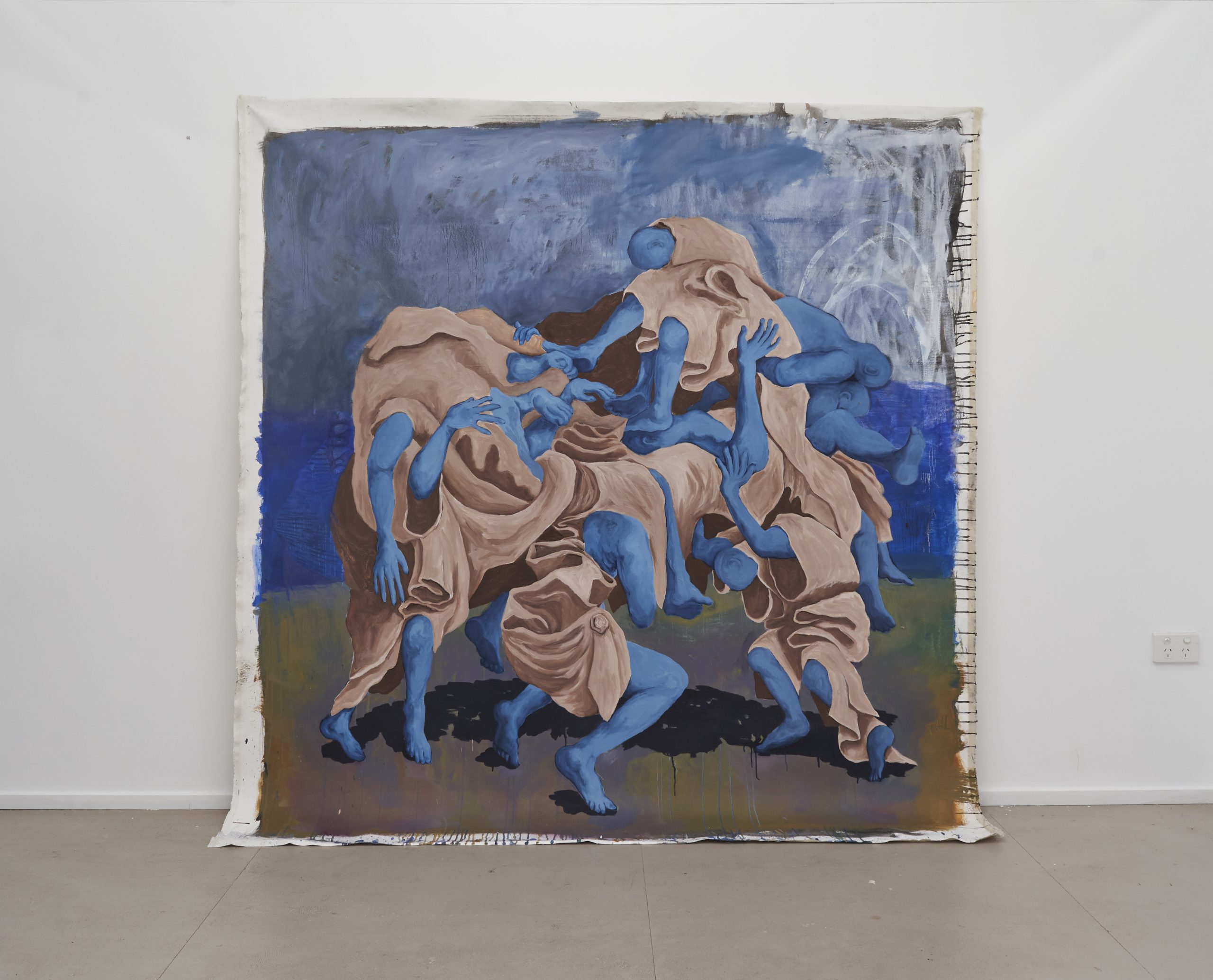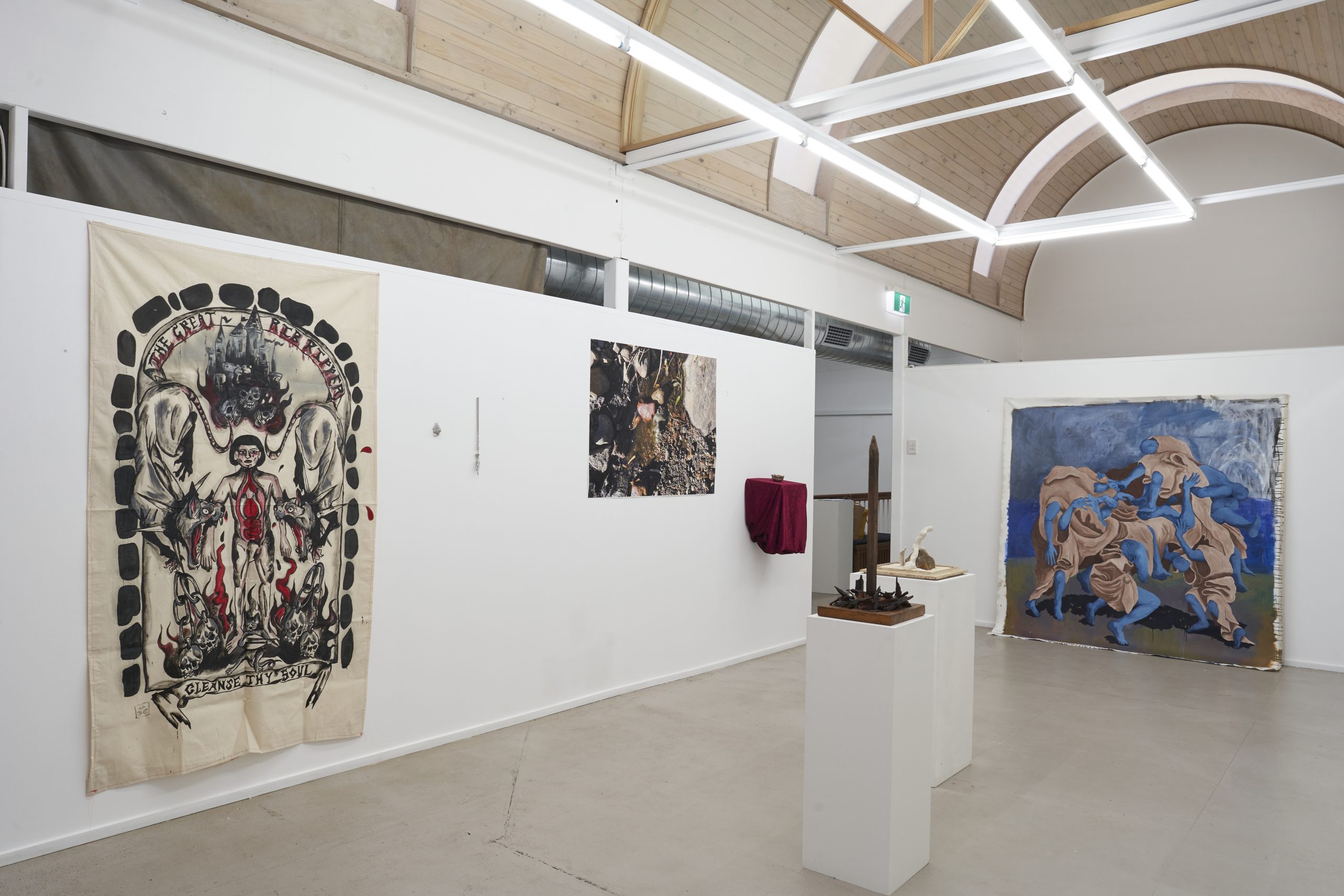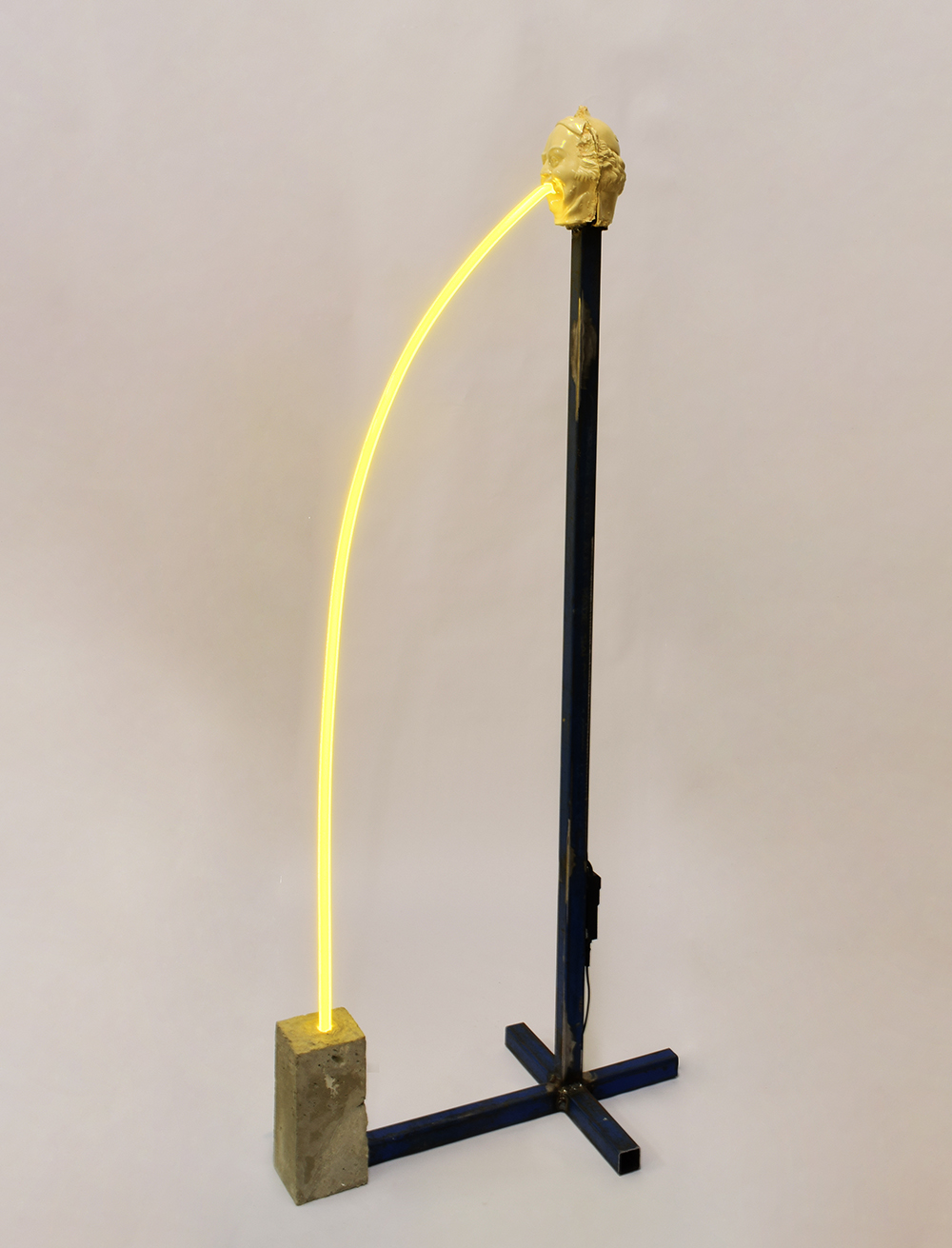
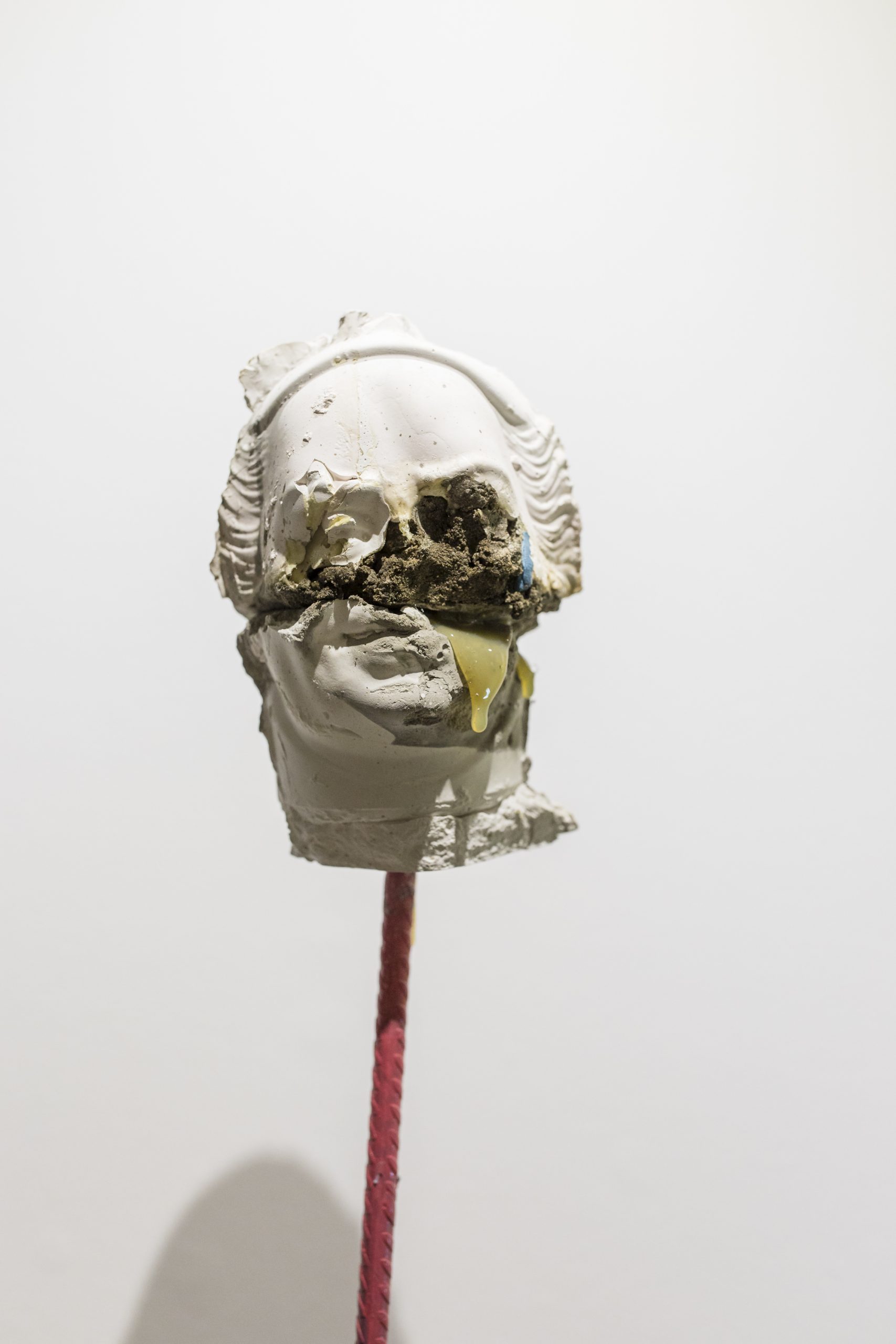
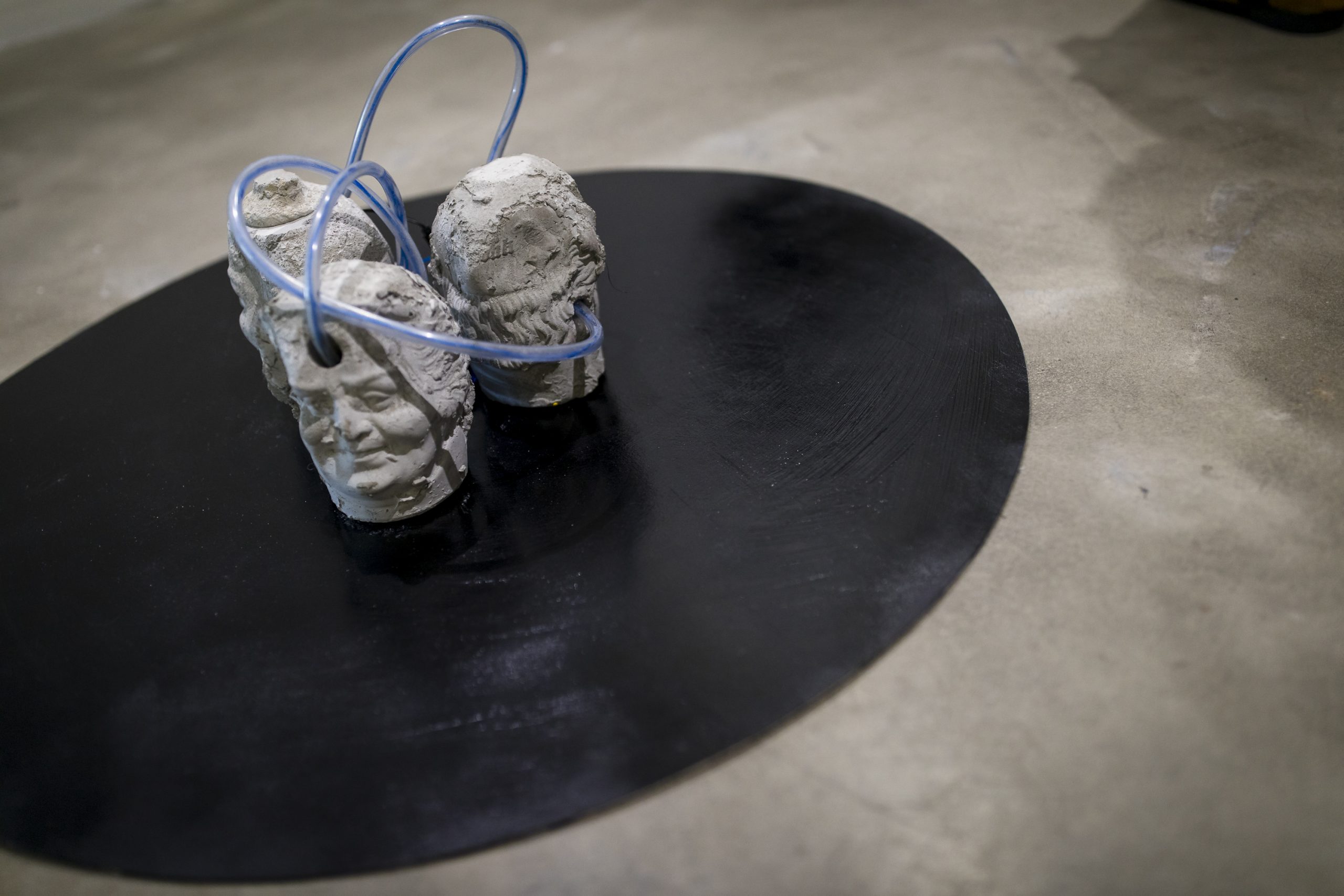

People Machine
Exhibited at Floating Goose Studios
A one-eyed octopus in the depths of the primordial ocean wraps one grasping tentacle around a bottle of doctor pepper, weathered beyond recognition by the motion of water and the passage of time. In the distant future, a hyper-evolved intelligence, long ago having abandoned the inconvenience of corporeal form, recreationally ponders the function of legs. It is from this inquisitive and somewhat detached position that Nicholas Hanisch embarks upon his existential quest to uncover what it is to be human in the sculptural installation entitled People Machine.
Upon entering the gallery we are confronted with a chaotic array of semi-mechanical contraptions. Multicoloured disembodied heads spew forth a fluorescent glow or rotate spasmodically in our general direction. The walls are scrawled with inanities, the dictums of a crazed scientific mind who, without ever experiencing what it is to be human, is attempting to resurrect our species under the strictures of laboratory conditions.
The plump and bemused head that becomes Hanisch’s avatar is equally a representation of humanity as a whole, and as a stand in for the artist himself. This icon of humanity is stripped of its individuality through the process of cast mold reproduction. Humorously an attempt is made to restore that individuality to the mass produced and ready-made human substitute by subjecting it to to various processes. It is squashed, sliced, shrunken, and impaled; in one instance conjoined through a telekinetic beam, and in almost all cases painted with garish hues.
In many ways the basic premise of Hanisch’s work is an attempt to come to terms with the self through a frame of reference of the other. To use his own words, “to dissect what it is to be human, through a lens of something that isn’t”. Although this “something that isn’t” is never specified by the artist, we gain a sense of its persona through the haphazard way that it goes about investigating humanity. We are invited to conjure in our minds some ethereal being or galactic slug; something that is entirely foreign to our own experience and conception of reality. It is in fact through the failures of this imperceptible other to successfully emulate something essentially human that we gain such a strong impression of its character.
For Hanisch this hypothetical narrative operates in governance of the act of making. His material choices reflect a play between the eternal humanism of classical sculpture, the pragmatic brutalism of the construction site and the pseudo-technological spectacle of low budget science fiction. Each work is analogous to an aspect of human experience, something the artist considers indispensable in coming to terms with an overarching conception of “us”. However, with each of these aspects presented in isolation a profound absurdity becomes apparent. Perhaps we are to understand that a humanistic understanding can only come about from a holistic approach that encompasses the inherent contradictions in our character as a species. Perhaps it is an acknowledgement of our inability to faithfully represent the human condition in the artificial conditions of the gallery. Perhaps, as at the outset I first speculated, Nicholas Hanisch really is an octopus.
What we can truly draw from People Machine is that any attempt to present an overarching concept of humanity will be inherently be fraught with over-generalization. The installation we are presented with is an intentional representation of the failure of such an experiment and the absurdity that results when an attempt is made to isolate or categorise the multifaceted and fractal nature of the human condition.
an essay by Andrew Clarke.
